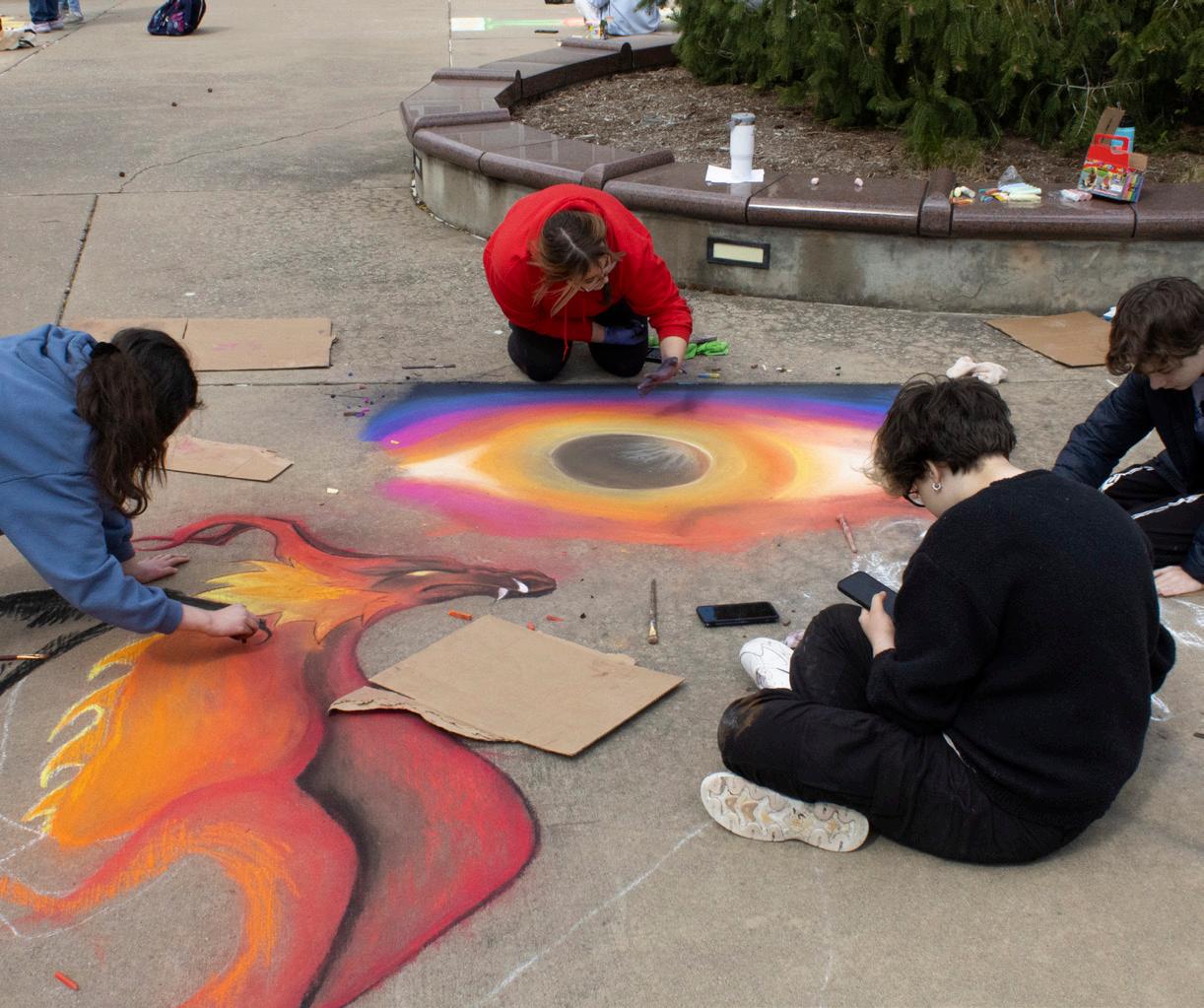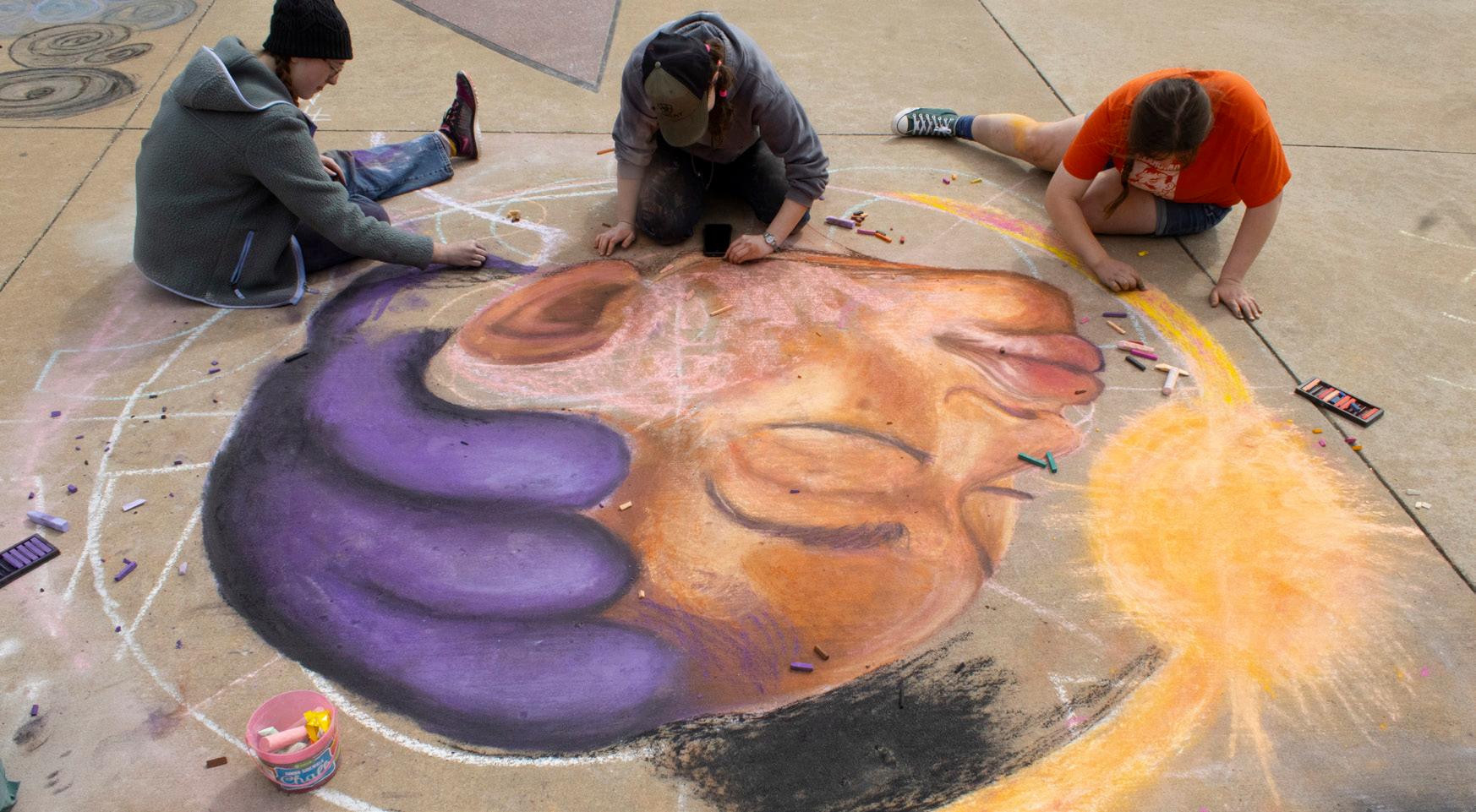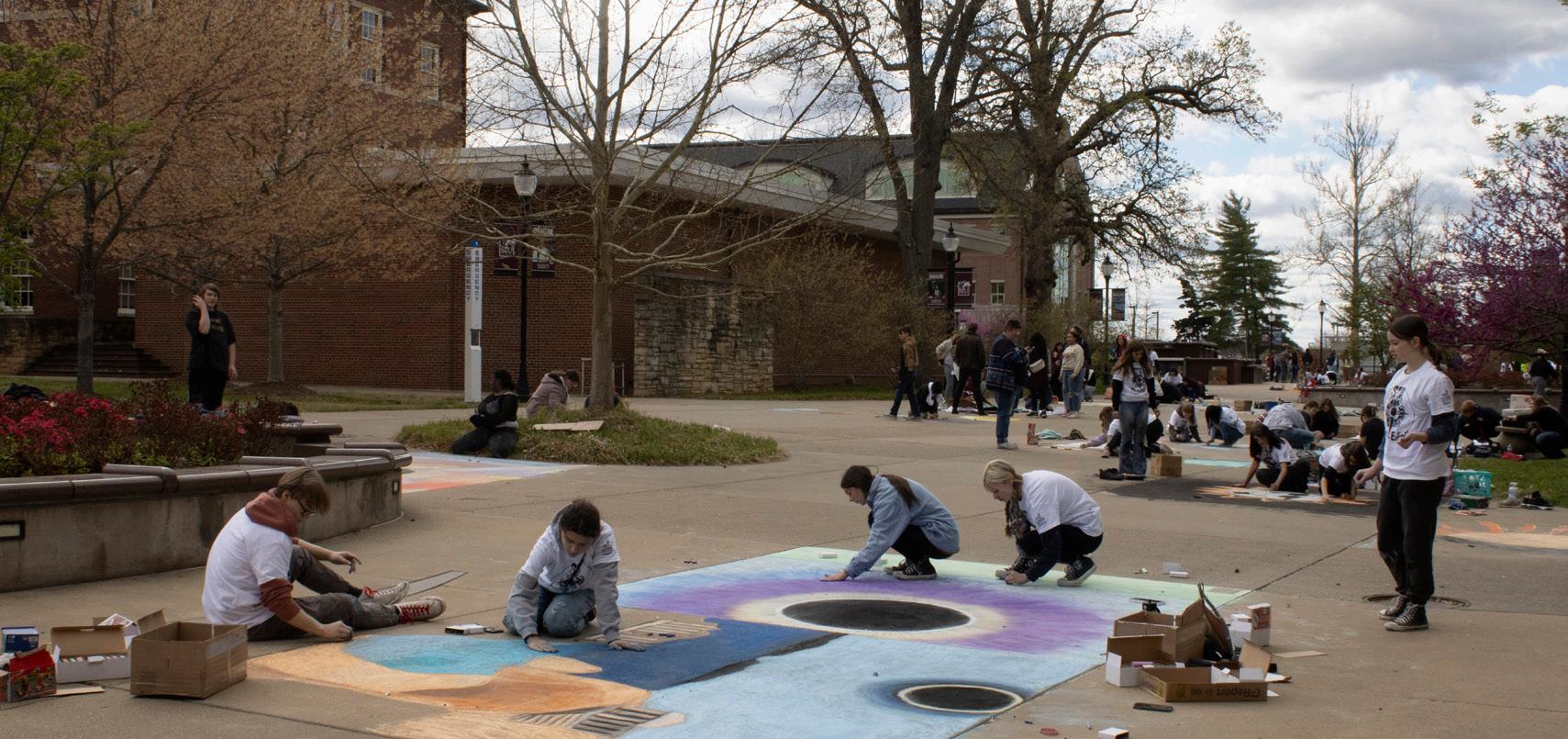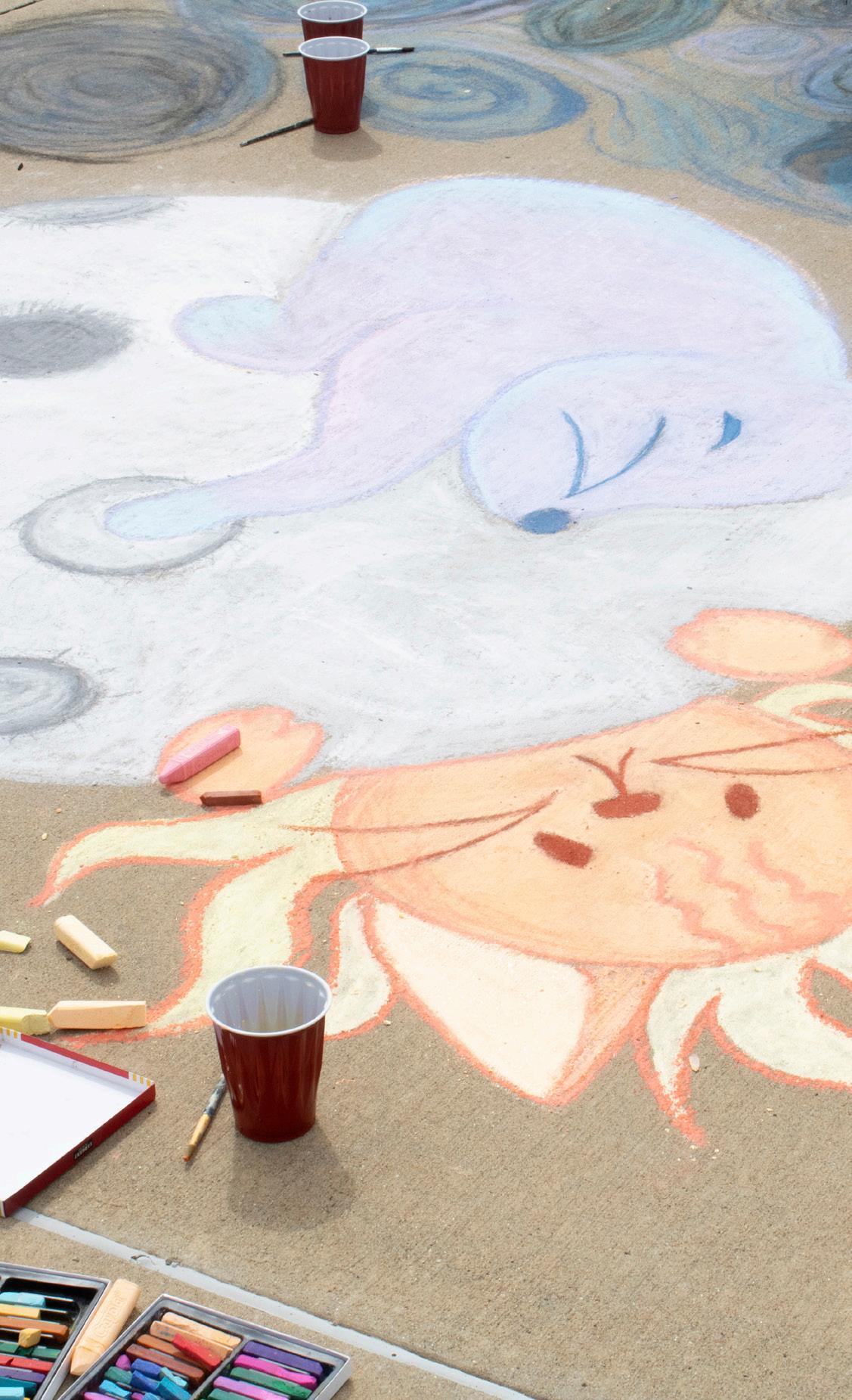THE Daily Egyptian



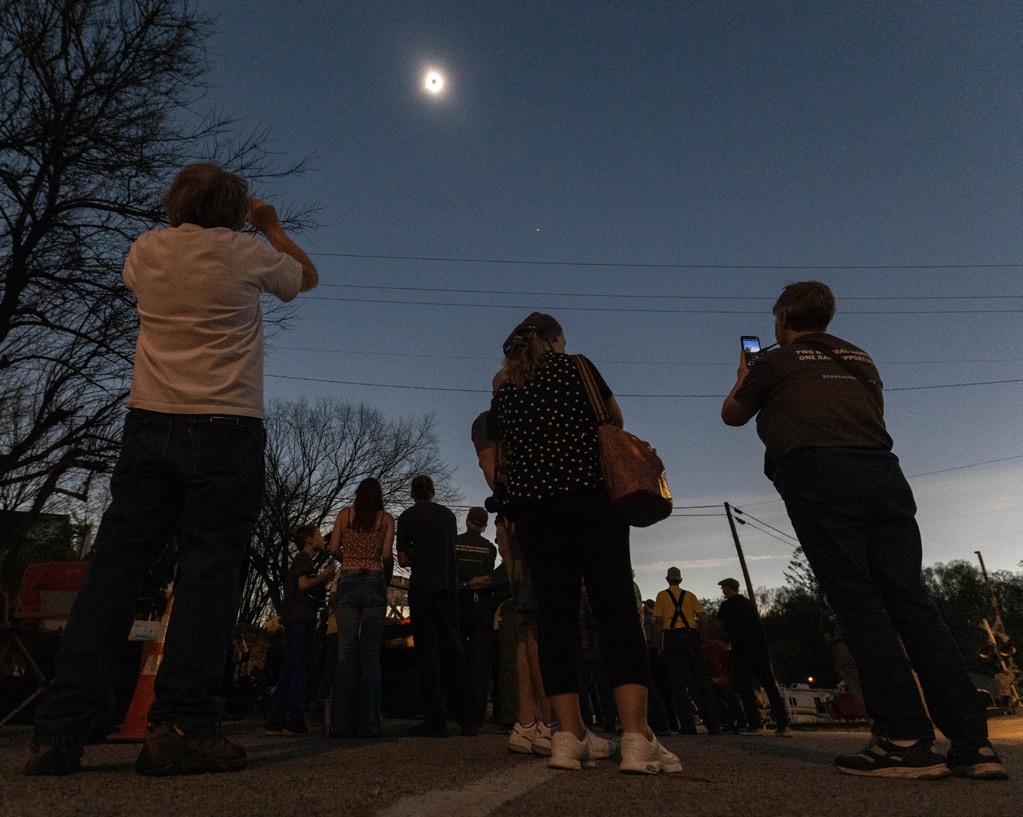
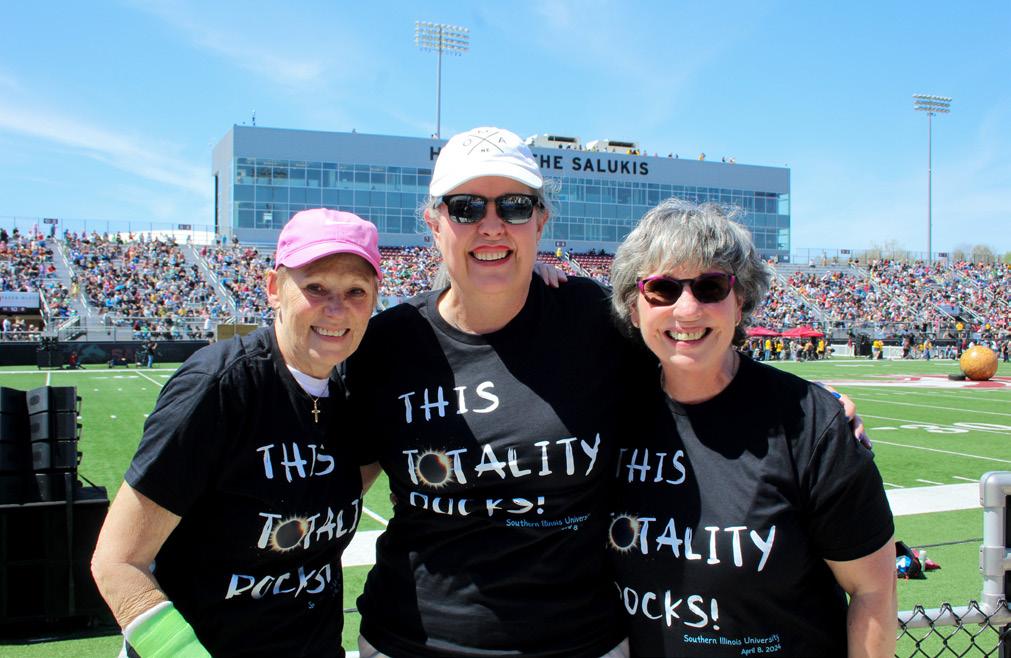
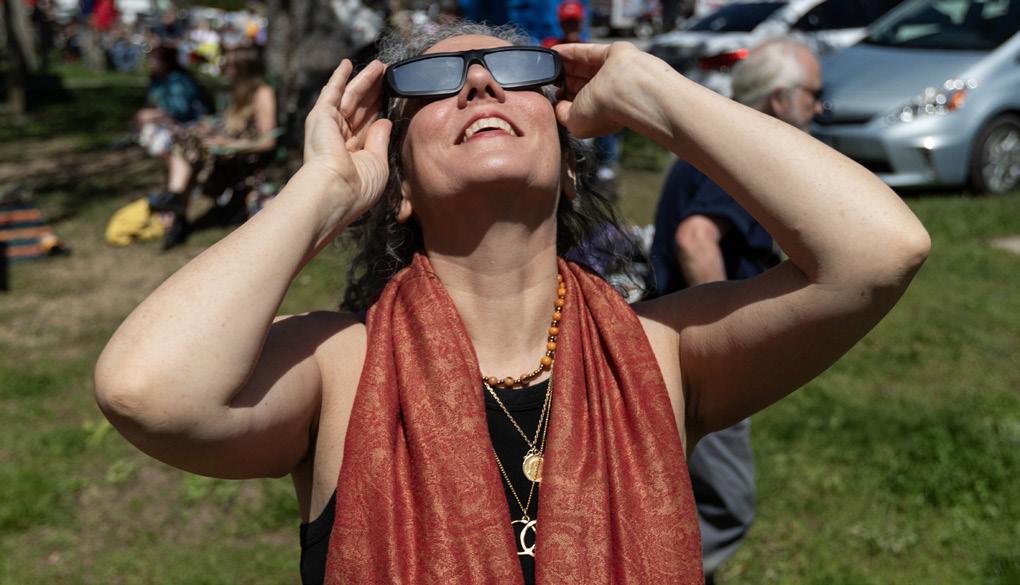
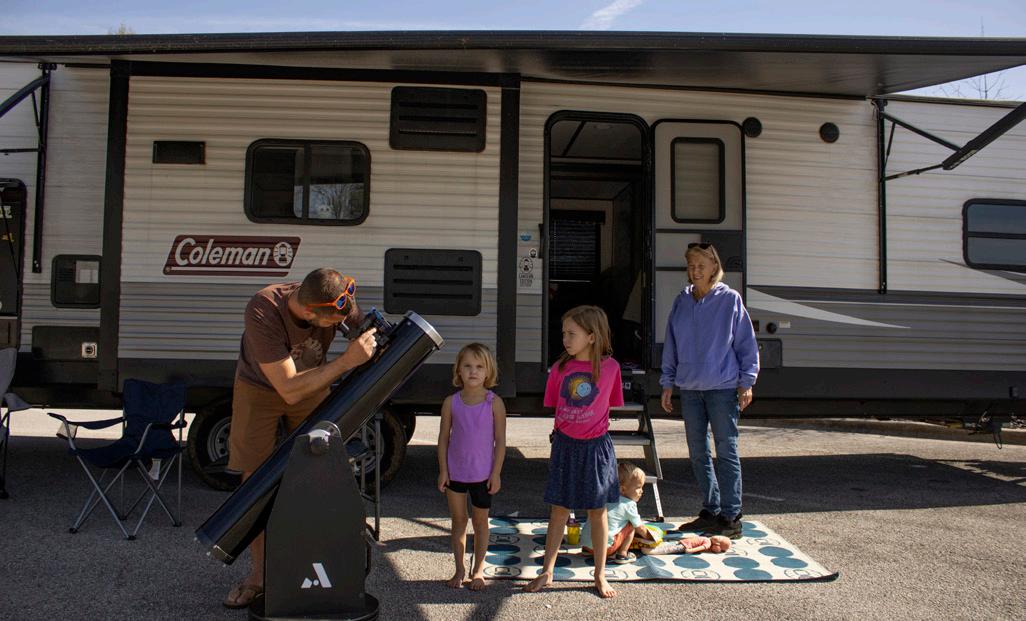
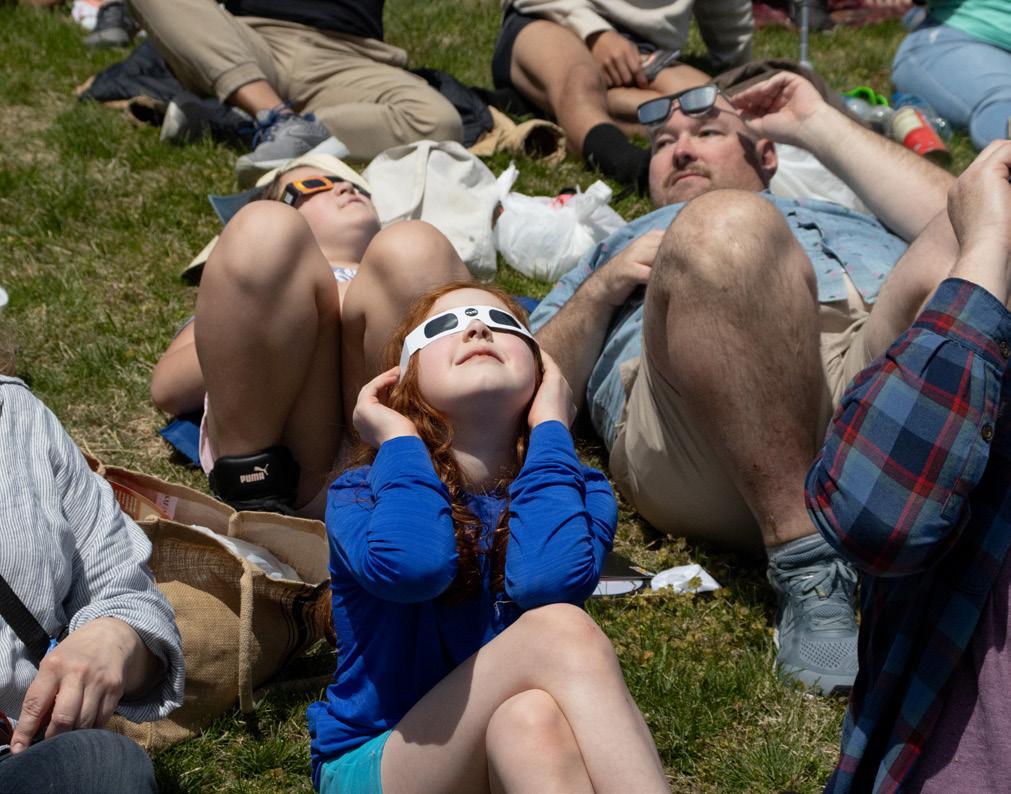

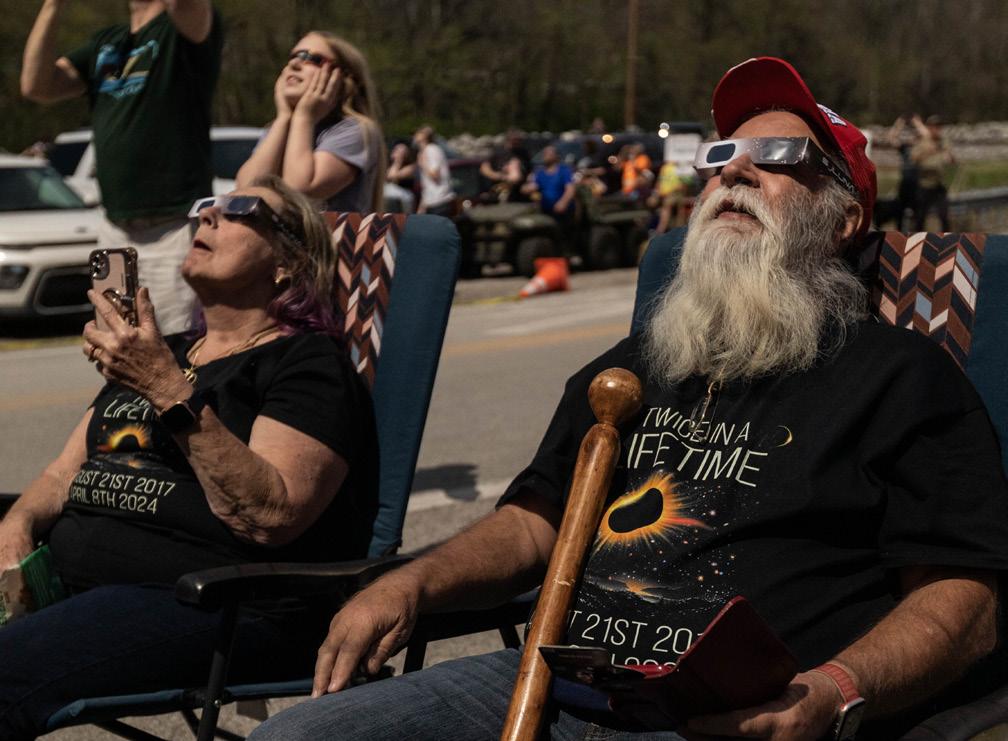
A total solar eclipse darkened the skies over southern Illinois Monday, April 8, 2024. Historic crowds put a spotlight on the Carbondale area and SIU.


Carbondale was the media hotspot for the total solar eclipse on Monday. The event brought in over 15 thousand spectators and media outlets.
“I talked to a lot of people who were just really excited about the prospect of seeing in the same place twice because it’s such a rare experience,” said science reporter Katrina Miller from The New York Times.
ABC was set up down at the south end zone and provided a live broadcast during the eclipse. Continuous preparation was put into the event from rehearsals to in-themoment coverage. The ABC crew started its day at 4 a.m.
On Sunday, ABC along with multiple other news sources ran rehearsals to ensure that the event would go smoothly.
“It’s the crossroads where we were here seven years ago, so obviously we didn’t mind coming back,” said ABC freelance photographer Bob Brant, who was there with his son, Robert Brant, a sound technician.
The father and son duo felt proud to say that they are both SIU alums. Both were involved with the communications department.
“I graduated in ‘82 from the radio and television broadcast,” Bob Brant said. “I worked at the local PBS station here as a student and went on to Chicago at the local CBS affiliate after I graduated. Then

I went on to the ABC network. I’ve flown on Air Force One and I was at Katrina, so it’s been quite a career.”
Robert Brant said, “The cameraman asked me one day if I wanted to help and ever since then, it’s been twelve years now since we’ve started doing it together. It’s been a really good run.”
Along with ABC News, The New York Times was present at the event and spent many months preparing. Its crew began in October with a practice run on the annular eclipse.
“We had reporters stationed across the path,” said reporting fellow Katrina Miller. “That was sort of an introduction for the type of live reporting we were looking at.
We kind of worked out all of the kinks, then just like today, a lot of us lost service, so we figured out how to do things more smoothly.”
A total solar eclipse occurring in the same place is a rare occurrence; it only happens about every 330 years. Most of the sights of totality are hard to reach. Therefore, Miller said she was excited to witness it in Carbondale.
“For the solar eclipse to be over a place that’s reachable in the United States, and then also a college town, it kind of makes it the perfect storm,” Miller said.
Miller began her career as a science writer with The New York Times in a way she described as unconventional. Her

experience and knowledge in the field of physics is what led to her to become the top eclipse reporter during the event.
“I majored in physics and I went to get a Ph.D. in physics from the University of Chicago. I asked the Chicago Institutional News Page if I could volunteer a couple of clips to have some bylines under my belt. I got an internship at Wired Magazine one summer during the pandemic,” Miller said. “I stayed on at Wired after my summer internship and I wrote a magazine featuring about 6000 words about my experience as a black woman in physics. That’s what kind of got me noticed by The New York Times Fellowship.”
The New York Times had photographers and reporters present at the event providing a newscast that can be reached on its website. Additional coverage will be available after the day of the eclipse.
“If you go to the New York Times website homepage at any point today, you’ll see a banner up top with all of our live blocks and solar eclipse coverage is smack dab in the middle of the front page,” Miller said. “If anyone wants to read coverage after the fact, anyone can go to my byline page, and it’ll show so many eclipse stories.”
Sabrina Winters from KBSI, the Fox television affiliate in Cape Girardeau, Missouri, was present to cover the eclipse as well. Winters decided to show everyone
from Cape Girardeau what the event of totality looked like at Saluki Stadium.
“Early this morning, starting with gathering my script and with the interviews, I interviewed a guy with NASA,” Winters said. “Another guy was in a Star Wars outfit, I gathered some B-roll and my team and I are getting that together.”
Illinois Governor J.B. Pritzker joined the crowd to witness totality for the first time in Carbondale. Prtizker noticed how the entire audience became silent as darkness fell upon the stadium.
“A hush came over everyone. I think it was all of us in awe of the universe, and also our place in it…the experience of being here with everyone being quiet was tremendous,” Pritzker said.
Another notable person that was working through the eclipse was Karla Berry. She was working to manage the event’s live stream on the SolarSTEAM SIU page. Berry was working with NASA Edge, while running back and forth from the stadium to the press box.
With Carbondale as the front and center of eclipse coverage, eyes were widely drawn to the area. The national phenomenon brought attention to southern Illinois that will be remembered by people both in and out of the region.
Staff reporter Alli Goering can be reached at agoering@dailyegyptian.com

The eclipse that passed over Carbondale on Monday was truly a family event. Groups from all over the country made their way to Saluki Stadium to watch the moon cover the sun.
“It brought people to southern Illinois, to Carbondale and to this campus,” said Illinois Governor J.B. Pritzker. “I love that. First, because everybody had a great time and treated each other kindly. Second, because it brings tourism to our state and to this area, and third I think there are going to be a lot of people who after they leave decide ‘Hey, I’d like to apply and come to a school like this.’”
Mia Ginae Watkins traveled nearly 2,000 miles for the event. A resident of Los Angeles, she planned the trip with her parents and godsister, who all live in St. Louis.
“I figured it would be a great road trip and I haven’t been to Illinois in quite some time so I thought it would be a cool family trip to do,” she said.
She described the energy in Carbondale as “electrifying.”
“There’s a lot of stuff going on…but this is exciting. I’ve never been to the campus, so this has been pretty awesome,” she said.
SIU Chancellor Austin Lane said the event felt “like a homecoming.”
“It’s not only brought a sense of community here locally, it’s brought people into our community to really see what it means to be a Saluki, see our beautiful campus and region, it’s great all around,” Lane said.
Lane spent the 2017 eclipse in Texas, but he said he wished he had spent it here.
“We have the better view,” he said. “You’re at the crossroads. Texas was a little different, so I’m so glad to be here in 2024 to see it.”
For four minutes, the sky grew dark, and the crowd of tens of thousands of people fell to a standstill.
“That was awe inspiring. It was pretty cool,” said Bob Strohbehn of central Iowa. He came to the event with Erin Strohbehn, who was visiting from St. Louis.
“We had both gone to the [2017 eclipse]...We watched it in southern Missouri, south of St. Louis, and it was two minutes [long],” Bob Strohbehn said.
“This one was four minutes. It was long enough that we could really see all of the solar flares and the things that were happening. [It] was pretty cool.”
The presence of NASA at
the event is what caught their interest. Erin Strohbehn said they came “because NASA was coming here and because it seemed like they [Carbondale] had a pretty good setup of things and was in the centerline of totality.”
It was a great bonding experience for local families as well. Kristin Truitt spent the 2017 eclipse with her daughter Kylie, and they relived that moment on Monday.
“For the first one, she [Kylie] was tiny so she might not remember it, so this time she’s going to be able to see it,” Kristin Truitt said.
Kylie Truitt said she was most excited to see “the diamond ring.”
The sense of camaraderie wasn’t just present in familial form. Many friends gathered together to experience the oncein-a-lifetime event.
Among the visitors were Sara Martens of Omaha, Nebraska, and Carolee Cronin of Woodbine, Iowa. The women met when they were in the eighth grade and, now in their 60s, decided to visit Carbondale for the eclipse. Joined by Kathy Wischow of Omaha, Nebraska, whom they met through mutual friends, they embarked on a “girls trip” to southern Illinois, donning matching t-shirts for the event. The shirts said “This totality rocks!”
“As we were driving here, we talked about [how] you could just sit in a field somewhere, but it lacks the community, it lacks the information that we’ve been getting and it just doesn’t feel like it’d be as much fun,” Martens said.
This was the group’s first time in the city.
“I’ve never been to Carbondale before,” she said. “It looks lovely and everybody’s been super friendly and hospitable, and [they’ve] put on a great event.”
Wischow said the energy was “upbeat” and “fun.” She also said she thought the science presented was awesome.
Cronin said, “It’s one of those moments to just pause and recognize the greater universe and everything that happens that we can just so often take for granted on the day-to-day basis, of all the magical things that happen.”
She also said it felt “awesome” to be with her friends.
“It’s going to be a very special memory,” she said.
A limited number of tickets were free for SIU students. Abby Zerrusen and Anijah King said they were thrilled to be in the
stadium, as they were not able to experience the eclipse back in 2017.
“It’s exciting,” Zerrusen said. “I don’t know what to expect. I haven’t seen it before.”
King said, “I think it’s also exciting since my first time [seeing it] was in a classroom.”
SIU freshman Justyce Petty was able to experience the eclipse seven years ago in her hometown, but it did not prepare her for the breathtaking sight.
“I saw the [2017] eclipse, but I didn’t really remember it that well and that one was only, I think, a partial, so this one was definitely a lot cooler,” she said. “I just thought it was really cool. I wasn’t really expecting it to be as cool as it was.”
The event also brought alumni back to campus. Dan Mackoway, class of 1977 sat outside of the Banterra Center with Kathie Falker, class of 1978.
“I love being back,” Mackoway said. “I live up in New York state, so getting back here is always great. The last time I was here was for the other eclipse.”
They both said their years at SIU were the best time of their lives.
Lane said “Saluki energy” was “all over the place.”
“We’ve got people excited. They’ve got their little ones here, we’ve got some older folks here. It’s just a great family environment, very college environment,” he said.
He said the audience should appreciate the rarity of the event.
“I hope they take away how important and how unique it is to be able to [have] two occasions [for] something like this [to] happen. That doesn’t happen anywhere in the world. So that’s how special the university is… and it’s really great for all of our campus community.”
Pritzker had a similar sentiment.
“In the path of totality, you can’t be in a better place,” he said. “And I have to say, among the students, faculty, visitors, everybody having a great time enjoying themselves, and we got to witness something that just doesn’t happen very often. [It was] my very first time. I was glad to be here at SIUC.”
While totality was short, the energy in the stadium was contagious. The 2024 eclipse is bound to become a memory that will stick with the community forever.



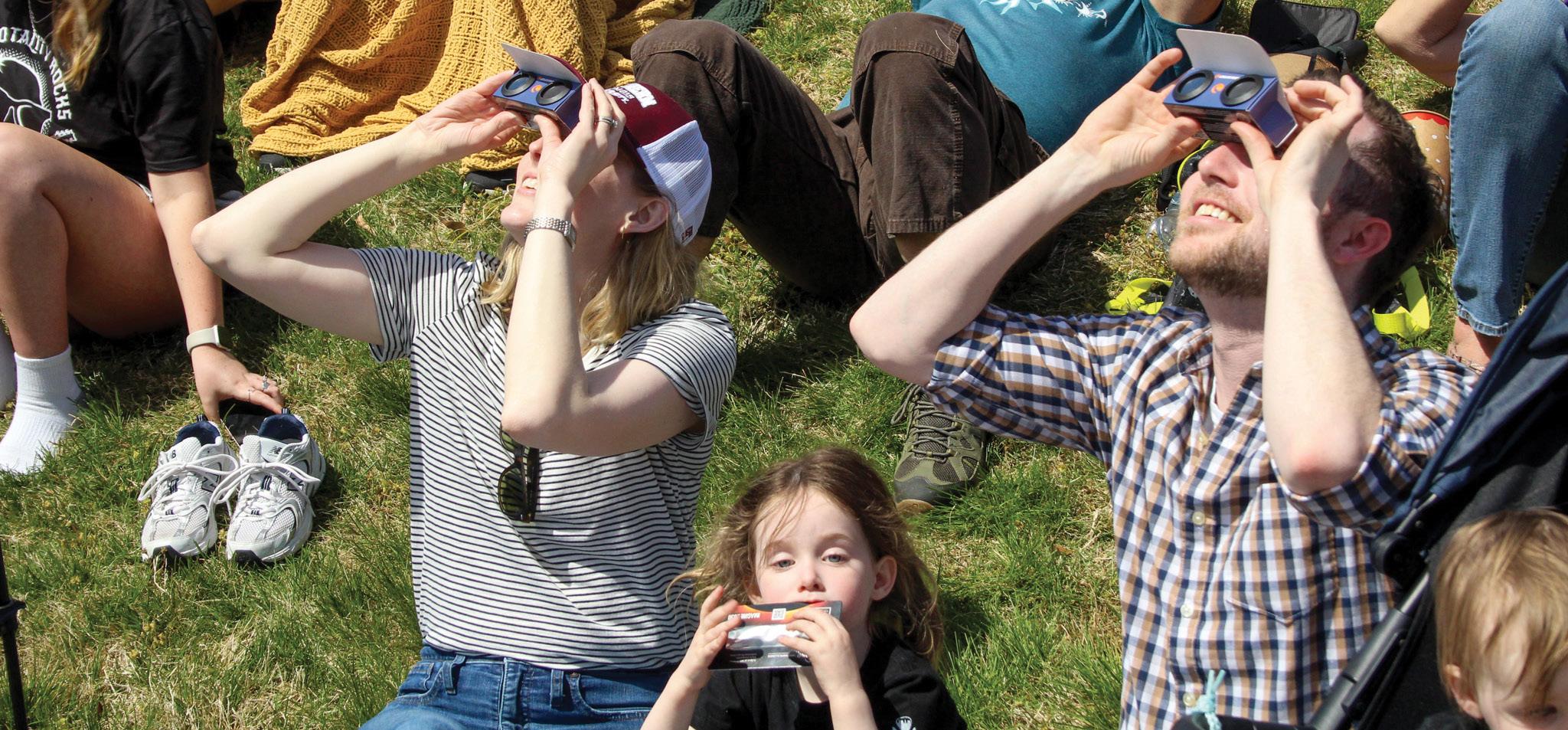
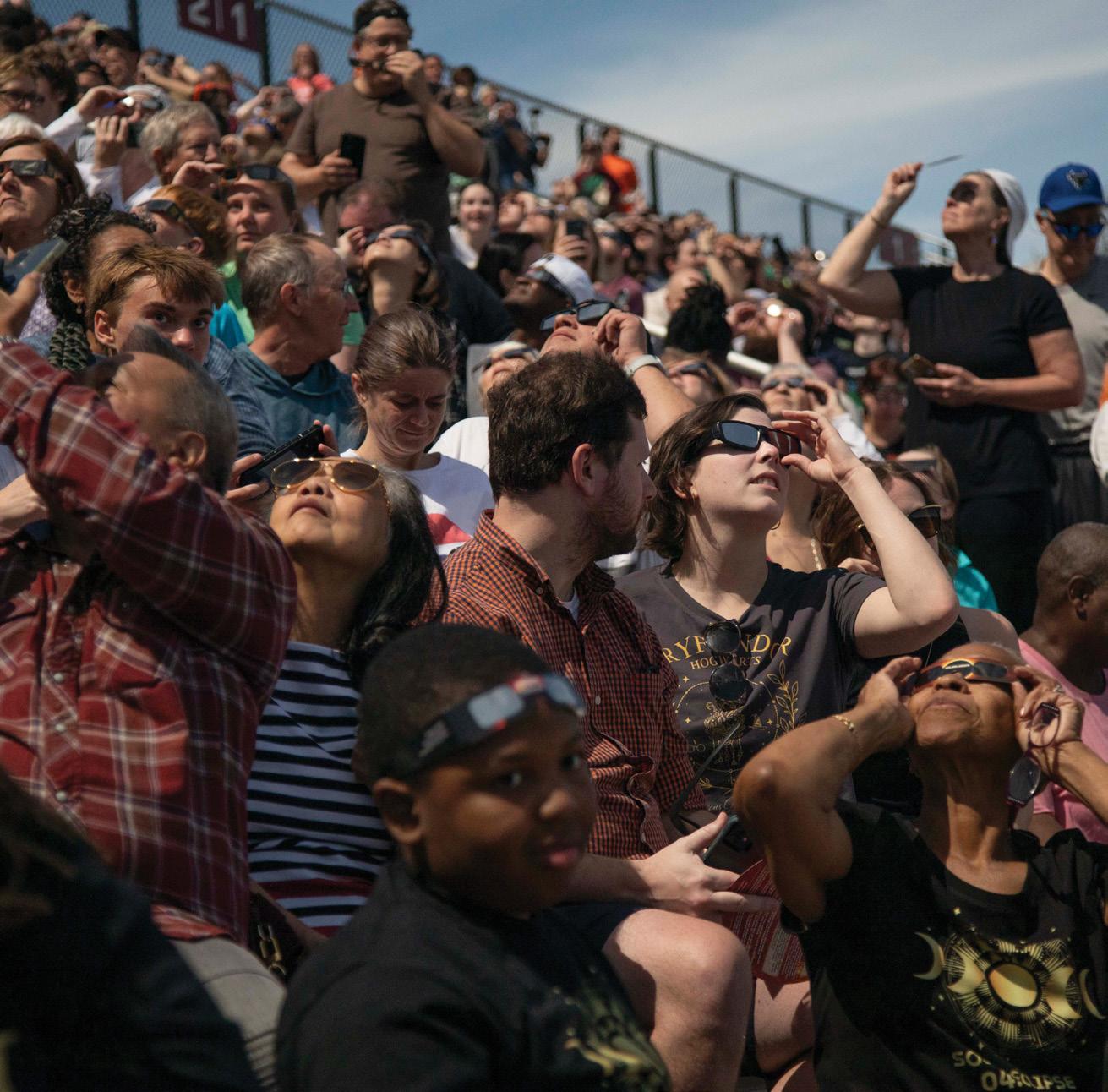






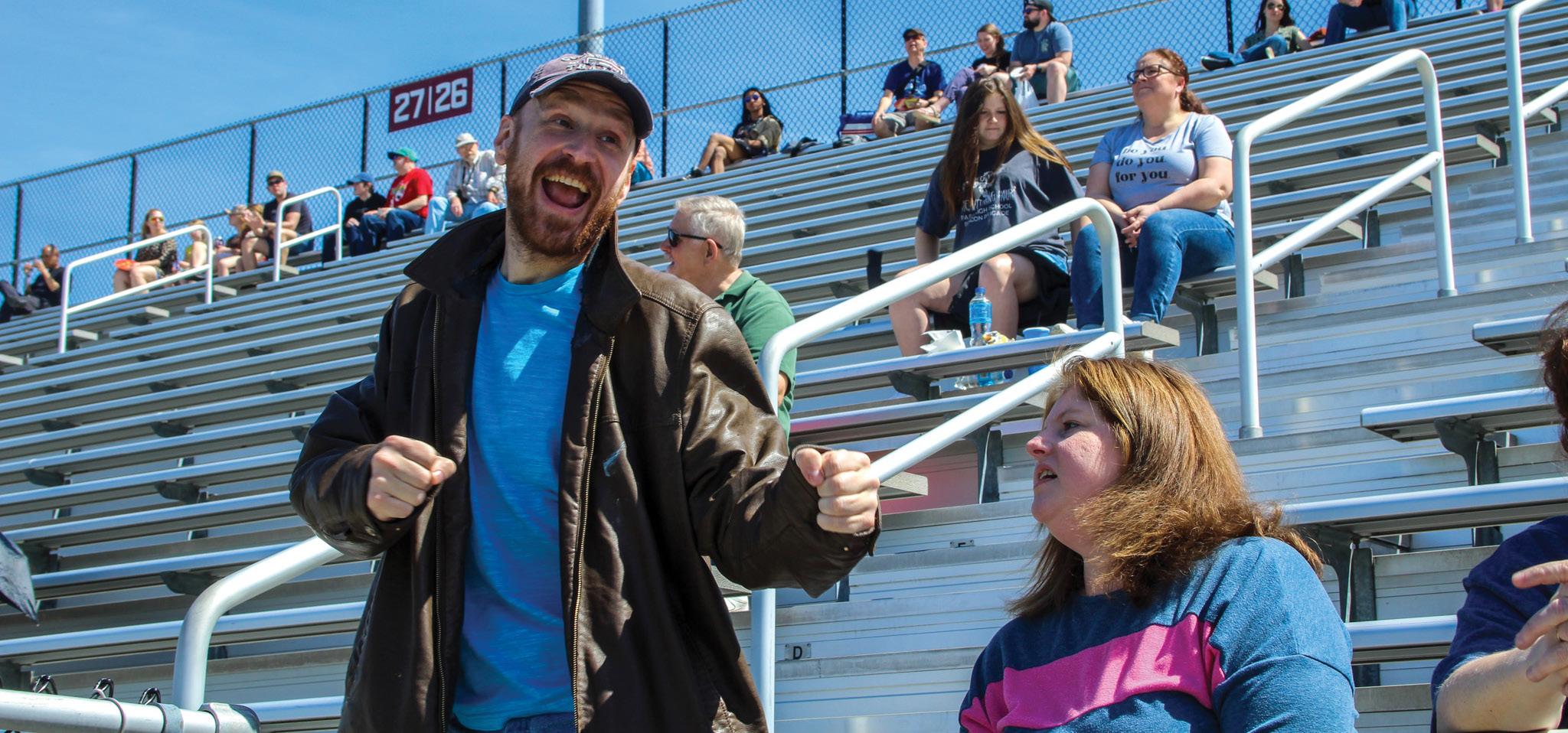


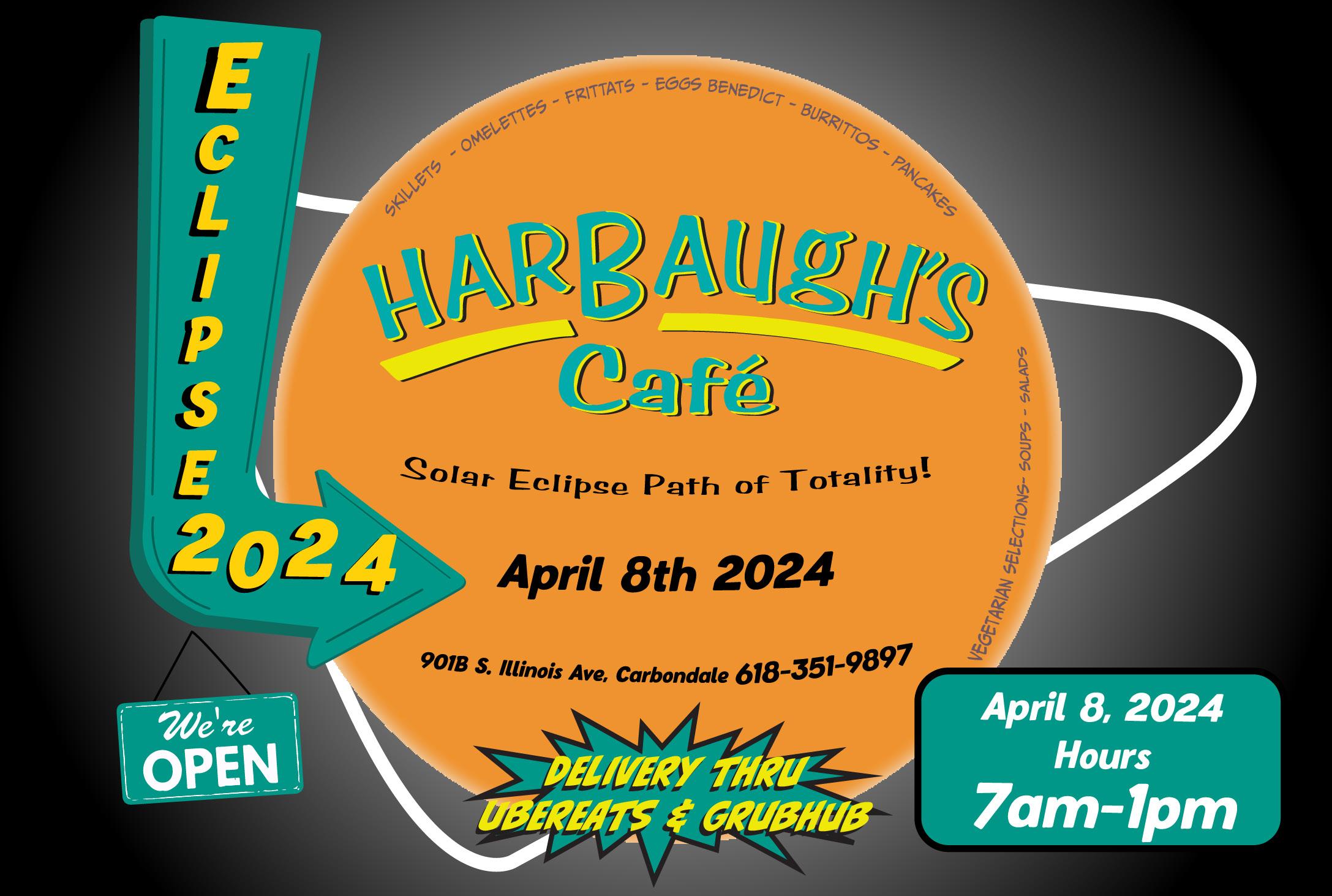
In the final moment before totality, as the moon slowly moved in front of the sun, I looked around the Saluki Stadium. The sky had rapidly darkened, casting a shadow over the landscape, and a gentle coolness chilled the air, sending a shiver of anticipation through the crowd. The stadium was alive with energy, laughter and excited chatter echoing all around. Faces were turned upwards, eyes shielded behind eclipse glasses, as we awaited the moment when day turned to night; when the sun was momentarily obscured by the moon’s shadow. The eclipse reached its peak at 1:59 p.m. Monday, bathing the stadium in a surreal twilight. It was as if time itself paused, allowing me to witness this celestial dance between the Earth, the moon and the sun. In that moment, I felt a connection to the universe, just a tiny part of something infinitely grander than myself.
It was a moment of unity and shared wonder, all of us waiting together under the vast expanse of the darkening sky.
All weekend, people on campus and all across the country had prepared for these few minutes. I spent the weekend with the SIU marching band playing space-themed music. Dancers, singers and cheerleaders joined us, learning choreography that was paired with a giant inflatable sun, moon and Earth.
Being on the field provided me with the opportunity to interact with scientists and educators who shared their knowledge about eclipses with the wider community. It was inspiring to see experts from various fields, such as astronomy and physics,

passionately educating spectators about the science behind the eclipse. Through their presentations and discussions, I gained a deeper understanding of celestial phenomena and their impact on our world. My hope is that it encourages people of all different backgrounds to be more curious about space in general, just as it has sparked within me. This newfound curiosity has the potential to lead to a greater appreciation for the world around us and a desire to learn more about the forces that shape our universe. Whether it’s through reading books, attending lectures or participating in citizen science

projects, I envision people embarking on a journey of discovery, fueled by the awe-inspiring experience of the eclipse.
The most significant moment for me during the event was the realization of just how many people had traveled to Carbondale to witness the total solar eclipse. Back in the newsroom later, I heard stories of all of the different people that my coworkers got to meet and talk to.
I myself saw so many others share that same sense of wonder and excitement in the stadium. It filled me with a deep sense of gratitude and appreciation
for the rare opportunity to witness such a celestial spectacle. As I looked around at the sea of faces gathered, I couldn’t help but reflect on my own past eclipse experience and how it differed from this one.
The first eclipse I witnessed was in 2017, back home in northern Illinois. At that time, I remember feeling slightly disappointed. Cloud coverage was high and totality was only at 90 percent. Full totality on a day with clear skies offered a completely different experience.
I was shocked by how dark the sky got at the very first second of totality. This was a vast contrast from my previous experience. My mom, who watched the eclipse at home again this year, sent me a picture of the moment of most coverage where it was still very bright outside. The difference was striking. Back home, even at the peak of the eclipse, there was still significant daylight, but here in Carbondale, the sky had transformed into a deep twilight within moments of totality. It was a vivid reminder of the impact of location and weather conditions on the viewing experience. Standing under the darkened sky, I was very grateful for the clear weather that allowed us to witness the eclipse in all its splendor.
This eclipse event was undeniably one for the books—an unforgettable blend of clear skies, shared excitement and the sheer wonder of totality. It’s a memory that will stay with me for years, serving as a testament to the beauty of the universe and the power of collective human experience.
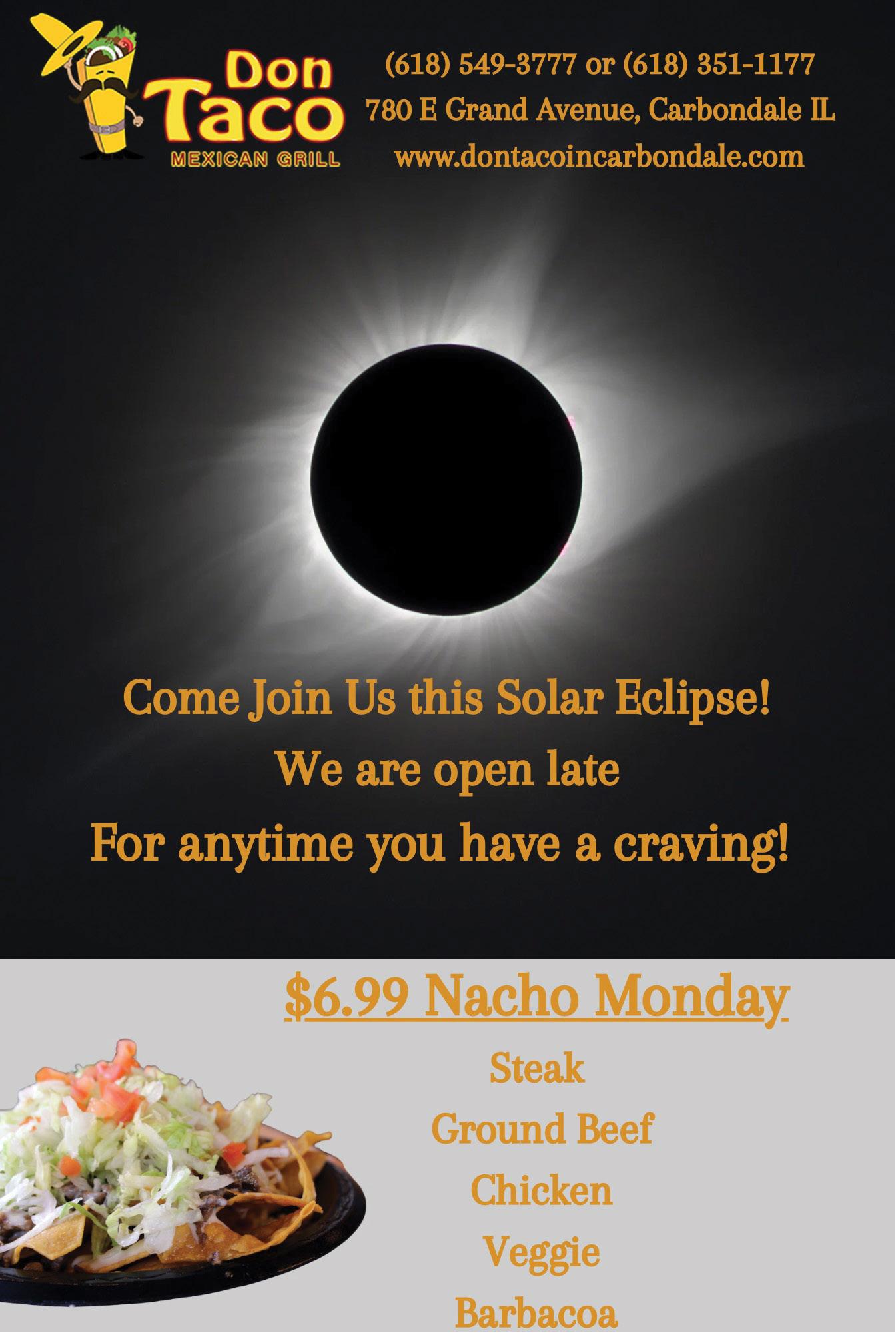
If Saluki Stadium is full, it typically means that the SIU football team is playing late in the fall and pushing for a playoff run.
On Monday, there were no football helmets or maroon jerseys adorning the field, and the thousands of spectators present weren’t there to watch football. They were gathered to watch what has been deemed by experts as a “once in a lifetime” event: the total solar eclipse.
Preparations for celebrating and viewing this eclipse have been ongoing since the last eclipse in southern Illinois for many departments across SIU’s campus. One of them is Saluki Athletics’ video department, which was tasked with presenting a show on the video board in Saluki Stadium.
According to Noah Zarn, the live production video coordinator for Saluki Athletics, preparing the show was a multi-pronged effort.
“We worked alongside NASA Edge and the arts department on campus. SIU then created a stadium show for the day of the event, and it’s my job to put the video and content all together,” Zarn said.
NASA EDGE, a popular video podcast put on by a team of NASA scientists, was in Carbondale for the
eclipse and contributed heavily to the show with their telescope feeds, and the SIU theater department produced an entirely original show with several dance numbers and live music.
Much of the content produced by these groups, including live camera feeds from inside the stadium, prerecorded videos, graphics coinciding with events happening in the stadium and NASA’s telescope feeds made up the video board show, which was coordinated from a control room in the Banterra Center.
While several athletic venues at SIU have video boards and produce live shows during their respective events, Monday’s eclipse provided a much different experience for the video department. Typically, the furthest departure from an athletic event they produce is graduation or an occasional concert.
This difference showed up in the preparation for the event, which Zarn said has been ongoing, mostly via email, for several months.
While game days typically have a lot of preparation, they also stick to largely the same script throughout the season. The show inside the stadium and the accompanying video board show were well over three hours long and were an entirely unique event, which helped make it a whole different animal than a
typical sporting event.
“It’s different crews, so it’s not the usual people I work with for any athletic event,” Zarn said. “It’s a lot of people that aren’t usually around sports, so it’s a little different for everyone. They’re in a sports setting and we’re doing a nonsports show.”
While he’s entering his second year as the live production video coordinator for Saluki Athletics, Zarn also doesn’t have any direct experience producing a show for an eclipse.
“I was a freshman at SIU last time, so this will be my first time working at the event. My staff is new to this as well,” Zarn said.
Zarn’s video staff is composed of several student workers, and many of these students played key roles in both preparation for the show and the execution of it.
Henry Miller, a freshman aerospace technology major who has worked for the video department since the fall, was tasked with creating a layout for the video board that allowed spectators to view several important elements simultaneously.
“I helped set up wireless equipment for the eclipse as well as programming the format of the video board so everyone can see live video, a timer, and closed captions all at once,” Miller said.
Zach Buck, a junior sports media major who has been with Saluki Athletics for two years, helped solve several new tech problems at the stadium prior to the event.
“I helped connect the camera and audio equipment to our control room so we can see the feeds and be in constant communication with the camera operators,” Buck said.
A number of students were in the stadium leading up to, during and after the eclipse, running cameras in order to put spectators and events around Saluki Stadium on the video board. Others were up in the control room, assisting Zarn with various tasks while theater and acting professor Matt Williams directed the entire show from down on the field.
While it was a stressful time for many within the athletics department, there were several positives that emerged, such as solving problems that might occur in the stadium at a later date.
According to Zarn, there was one glaring problem for the eclipse show specifically that couldn’t be solved until the day of the event.
Two of the handheld cameras that were roving around the stadium were supposed to be connected to wireless transmitters, which send a video signal over radio waves to receivers that are hardwired back to the control room.
Due to the amount of people, cell phones, and other broadcast equipment in the stadium and the surrounding area, there was concern that the feed from the camera could be choppy.
One of these cameras ended up receiving a hard wire into the stadium, which eliminated all of the choppiness but also meant that the camera was unable to move freely about the stadium. Besides that intricacy, the cameras were able to operate with minimal complications throughout the day.
Outside the obvious occurrence of the eclipse itself, there were professional benefits to the eclipse coming through Carbondale.
For Zarn, one his favorite parts of the process was “meeting other people and keeping up with what they are doing after the eclipse.”
And even though the eclipse and totality were over, the day wasn’t done until all of the equipment had been picked up and made ready to be used at a baseball game Tuesday.
“Once we get back to Tuesday, it’s kind of normal for all us athletics people… I’m kind of looking forward to going back to sports,” Zarn said.
Sports reporter Ryan Grieser can be reached at rgrieser@dailyegyptian.com.

As the moon inched closer, covering the sun, millions of people across the states cheer as the 2024 solar eclipse reaches totality. Meanwhile, at 1:59:16 pm a multitude of people gather on the boardwalk in a small town of 600 people. Makanda, Illinois, served as America’s eclipse crossroads seeing both the 2017 and 2024 total solar eclipse. Many witnessed this phenomenon for the second time in their lives.
With onlookers traveling from nearby towns or from places as far as Minnesota, the Makanda boardwalk was filled with people from all over.
With a walk through the Rainmakers studio and up the Jägermeister lined stairway into a garden of greenery, bands performed throughout the day, only stopping to observe the totality of the eclipse.
The first performance of the day was local band The Deciders, made up of Robert Russell holding the position of guitar player, Chris DiBiase the bassist and Jimmy Beers the band’s drummer.
Following the eclipse The Snowbird Streetband took the upstairs back porch of the boardwalk, which played the role of the makeshift stage for the afternoon.
Betty’s Brink and Cody Dawkins started the Snowbird Streetband three
years ago, a little while after they met in Alaska after the beginning of the COVID pandemic.
“COVID was really the catalyst for this project. Because we were both in food service honestly, and those restaurants and stuff shut down so we had some time on our hands,” Brinks said.
Brinks and Dawkins have been camping around southern Illinois for a while now. Currently they’re camping relatively close to the boardwalk, making their performance on April 8 quite convenient.
“Here’s what I want to get out of today. I just like to get our four and a half minutes of just that good stuff, and I’d like to see some solar mass ejections,” Brinks said.
Those who traveled from nearby and those traveling nearly 11 hours, like Cathrine Marsh, all had something in common, they were on the hunt for the perfect spot to view the eclipse.
Marsh, a Minnesota native, made her “quest” to southern Illinois after all the stories her brother told her about his trip to Makanda back in 2017 for his eclipse viewing.
“Well my brother [went] last time there was an eclipse and he said it was pretty... I was annoyed I couldn’t make it, and the way he explained it was, I can promise myself that I would make it to this one,” Marsh said.
She was on a mission to make it to
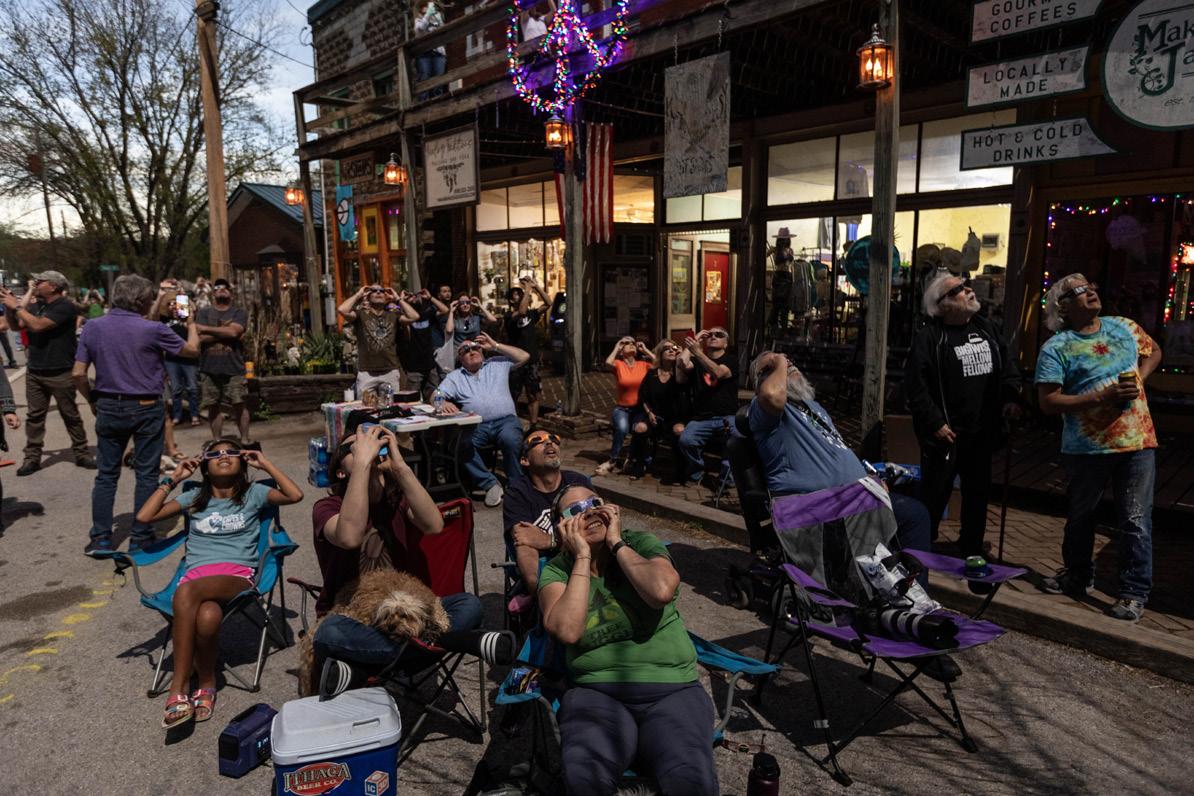
southern Illinois for the 2024 eclipse. Her trip was nothing short of what she was wishing for.
“I feel like I’ve been on what I call a quest. This morning I was in Benton which I kinda wanted to go a bit deeper. And well it’s a quest so that’s what you do you keep going until you find your spot. And last time my brother said you will find your people and, there you go, I have found my people so here l am,” Brinks said.
After buying a handcrafted necklace from Dave, the Rainmaker, she found her post next to Hontas Farmer, a Master
of Science and professor at the College of DuPage in northern Illinois.
Farmer traveled down from Chicago to relive her eclipse experience from 2017.
”Seven years ago I was right here, pretty much the same spot for the last eclipse. And how many people are gonna get to see an eclipse from the same place twice,” she said.
She traveled down with her 60MM Celestron refracting telescope with a solar filter and her laptop to live stream the eclipse. Her goal was to teach people about the eclipse through her telescope.

”I’m an educator and I’m a scientist, so I might as well do it [teach],” Farmer said.
Another couple that happened to make their way to southern Illinois by chance at the time of the 2017 eclipse decided to make the five hour drive from Joplin, Missouri, again seven years later.
Ron and Toni Kegerries said they wanted to be in the totality of the eclipse in Makanda because it’s a “neat little town.”
”Very eclectic,” Ron Kegerries added.
The couple is retired, giving them more time to travel and view things like the eclipse. Usually when they’re traveling it’s finding somewhere new to fish, but they couldn’t miss the opportunity to see another eclipse in the town after they stumbled upon the event in 2017.
”If it strikes our fancy we go,” Ron Kegerries said.
Makanda has been a hotspot for eclipse chasers for the last seven years after being the eclipse center of America twice. With town natives running shops selling everything from metal sculptures and ice cream to crystals and sage, the town is well known for its ability to never change.
”This little place? To me, it’s like stuck in time,” Ron Kegerries said.
News editor Joei Younker can be reached at jyounker@dailyegyptain.com. Sports editor Jamilah Lewis can be reached at jlewis@dailyegyptain.com.

Areas in Mexico, the United States and Canada observed with wonder as the solar eclipse happened Monday sweeping north and east across the continent.
The eclipse was first sighted in Mexico around 11:07 a.m. PDT and entered Texas at 1:27 p.m. CDT. It then traversed the U.S. before exiting through Maine around 3 p.m. EDT, proceeding into Canada.
The last solar eclipse in the U.S. occurred in 2017. NASA reported variations in the path and timing of the 2024 eclipse that differed than that of 2017.
The path of totality was broader this time due to the moon’s closer proximity to Earth. It covered more cities than its 2017 counterpart, allowing more people to witness totality.
NASA estimates 31.6 million people reside in this year’s path of totality, compared to 12 million for the 2017 eclipse.
In 2017, Carbondale experienced the longest period of totality at 2 minutes and 42 seconds. This year, totality lasted up to 4 minutes and 28 seconds near Torreon, Mexico, and approximately 4 minutes and 26 seconds at the center of its path over the U.S.
Cities with optimal viewing opportunities included Dallas, Little Rock, Indianapolis and Buffalo.
State police nationwide monitored roads, waterways, and airspace to manage potential congestion, ensuring smooth operations.
Investigators in Lorain County, Ohio, noted less traffic than expected and no major trouble. The Dallas Morning News and other nationwide news sources also report that they have avoided anticipated traffic concerns.
The Dallas Morning News reported travelers from France, Oklahoma, Florida and New York stopping into the area to view the eclipse from some
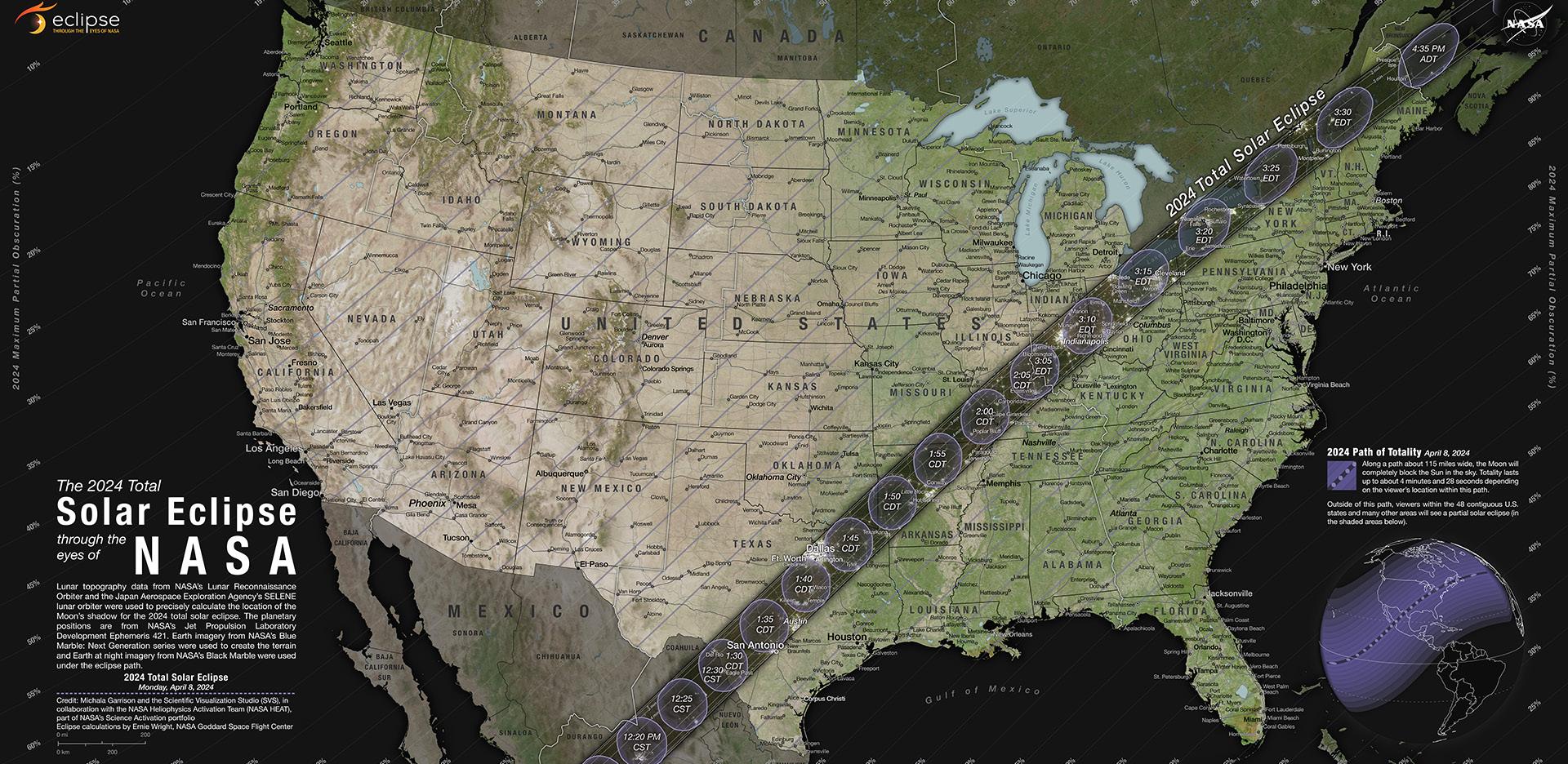
of their popular central district hotspots. The last time Dallas experienced totality was in 1878 and will not experience it again for another 300 years. Other areas in Texas were able to view the eclipse as well, given that the moon was closer to the Earth this time.
“We were home. The animals went quiet, and the temperature got cooler,” a person from Hewitt, Texas, said.
In Russellville, Arkansas, 300 couples gathered in a field for an ‘Elope at the Eclipse’ wedding event, earning the moniker “total eclipse of the heart” from The New York Post.
Russellville was ranked by NASA as one of the best places to view the eclipse, with totality lasting approximately 4 minutes.
In Indiana, thousands convened at the Indianapolis Motor Speedway for a Total Solar
One hundred feet under the highway, live music blared so loud concertgoers could feel it in their chests. Surrounded by a lawn of fake grass and a picturesque background, guests laid out blankets and chairs, immersing themselves in the vibrant experience.
“I came here from Tennessee with my nineyear-old son on a day’s notice because I saw the festival,” Jeremiah Priester said. “The venue is… beautiful.”
As part of its Total Solar Eclipse Festival, Shawnee Cave Amphitheatre hosted four days of live music. The concert series kicked off on Thursday, April 5 with a VIP Pre-Party, featuring performances from Pity Thy Neighbors and Lucas Wayne & The Cottonmouths.
“We felt that the eclipse was a great opportunity to bring everybody together and witness a wonderful event,” said Shane Wade, operator of the Shawnee Cave Amphitheater.
The stage, which sits directly underneath the overhang of a sandstone rock formation, featured 17 artists over the four-day celebration. The performers were a mix of local bands and national musicians.
“We try to bring people the best acts that we can get nationally,” Wade said.
Early Saturday evening, the crowd was small but lively. Families and guests gathered together, clapping and cheering throughout the various performances. Fresh Hops, a multi-genre band from northwest Indiana, was the first to go on.
“We’ve performed in southern Illinois quite a bit, but this is our first time here,” said bassist and vocalist Ian Gill. “We’re all very excited about it… What cooler of a place could you find yourself in?”
Being at the amphitheater reminded him of one of the many reasons he loves to perform.
“That’s the best part about being in a band. Every once in a while, I find myself somewhere that I’m like, ‘I never would have gotten this opportunity if it wasn’t for this.’ You’ll just be, like, looking out at beautiful mountains or something and you’ll be like ‘thank God I joined that band.’”
He said that it can often be challenging for artists to get the sound they want at an outside show, but the Shawnee Cave Amphitheatre is “a natural loudspeaker.”
“The acoustics are gonna be awesome, because
Eclipse event hosted by Purdue University. The event drew attendees from across the U.S. and beyond, with hotel rooms in the area reaching $1,300.
Guest speakers at the IMS event included astronauts, NTT IndyCar Series drivers and astronomy experts.
Cloud coverage in Buffalo, New York, hindered eclipse sightings, though occasional breaks allowed glimpses.
Maine experienced favorable weather for the eclipse, attracting additional travelers rerouted from Texas due to weather forecasts.
Houlton, Maine, witnessed the last moment of totality in the U.S., spanning 3 minutes and 18 seconds.
Large crowds gathered and were greeted by a three-day festival that included community
meals, ensuring there would be food to feed the traveling spectators that entered the community. The turnout was successful, and organizers were pleased after spending more than two years in planning.
Although visible from numerous locations, those who missed the event can view live feeds and posts on various social media platforms.The videos and photos show the crowds buzzing with anticipation and delight whether it was their first time witnessing a solar eclipse or not.
The next U.S. solar eclipse is slated for August 22, 2044, with totality over North Dakota, Montana and northern Canada. A coast-to-coast eclipse will span the lower 48 states on August 12, 2045.
Staff reporter Katie Kwasneski can be reached at kkwasneski@dailyegyptian.com

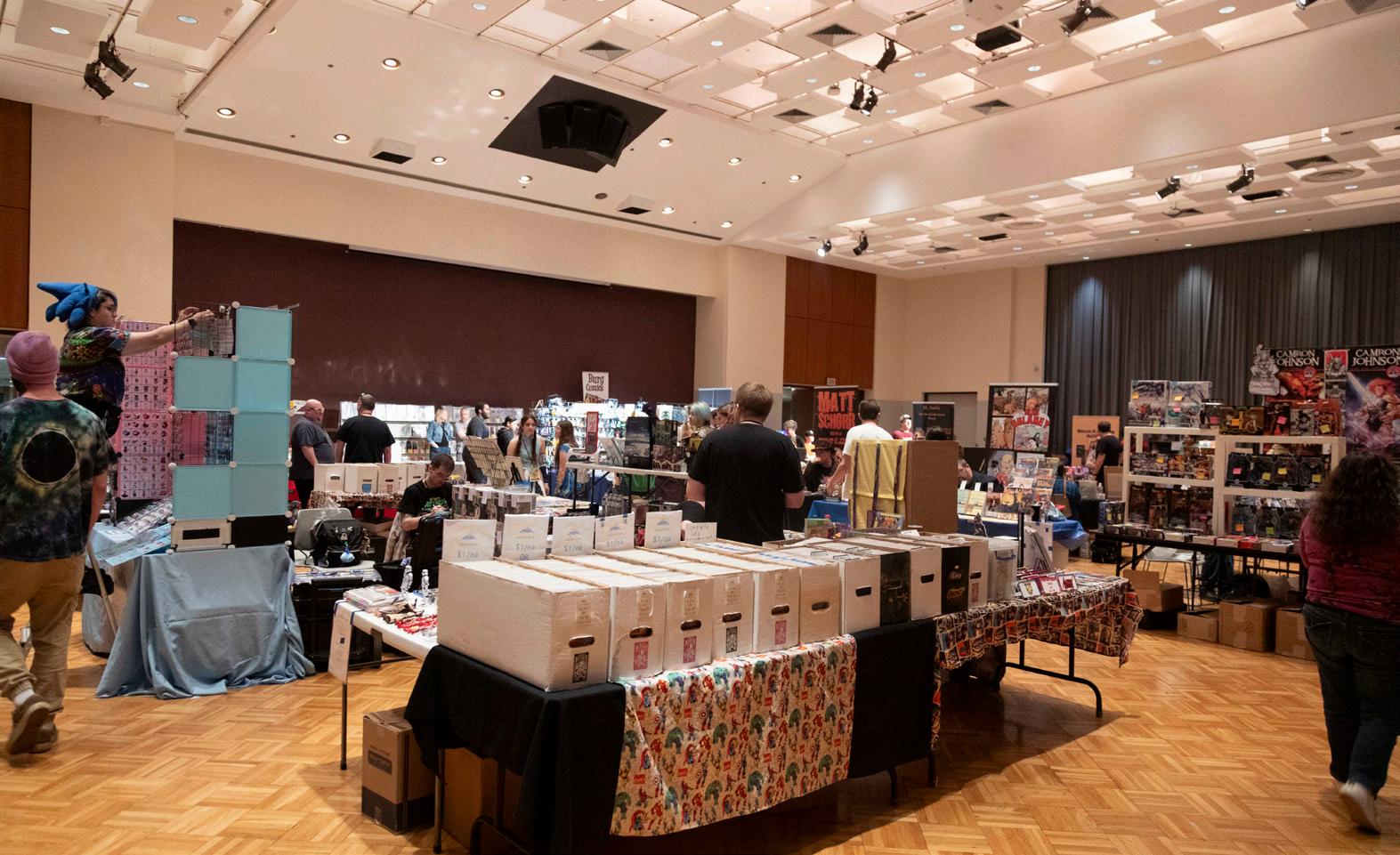
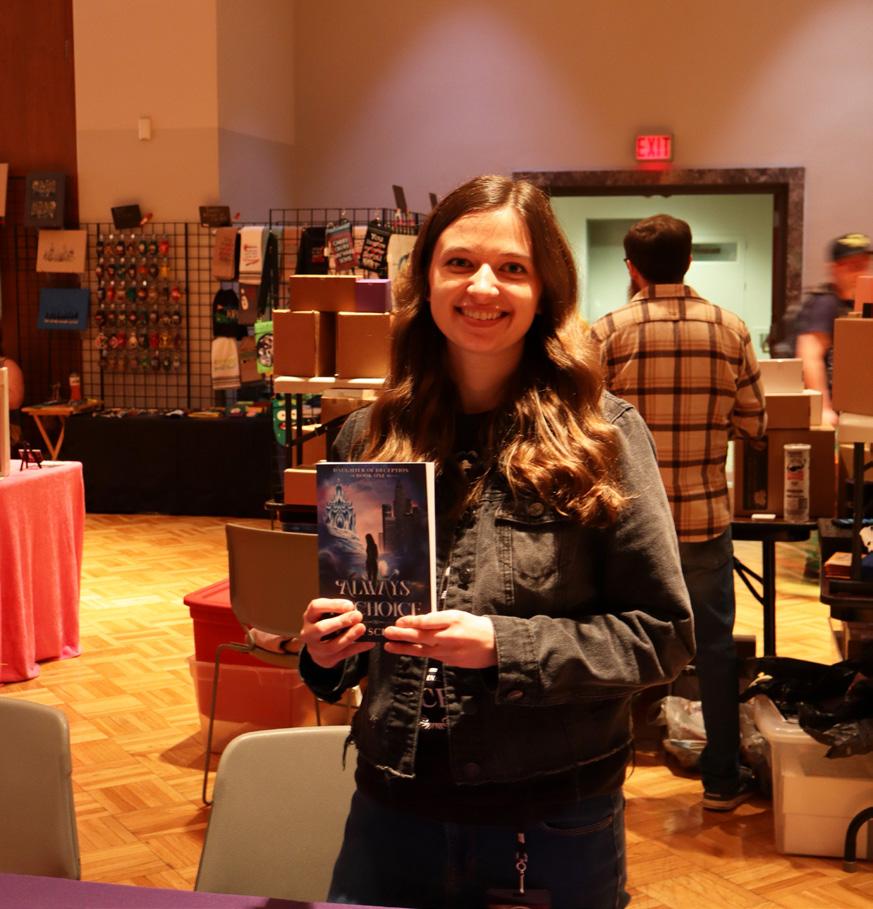

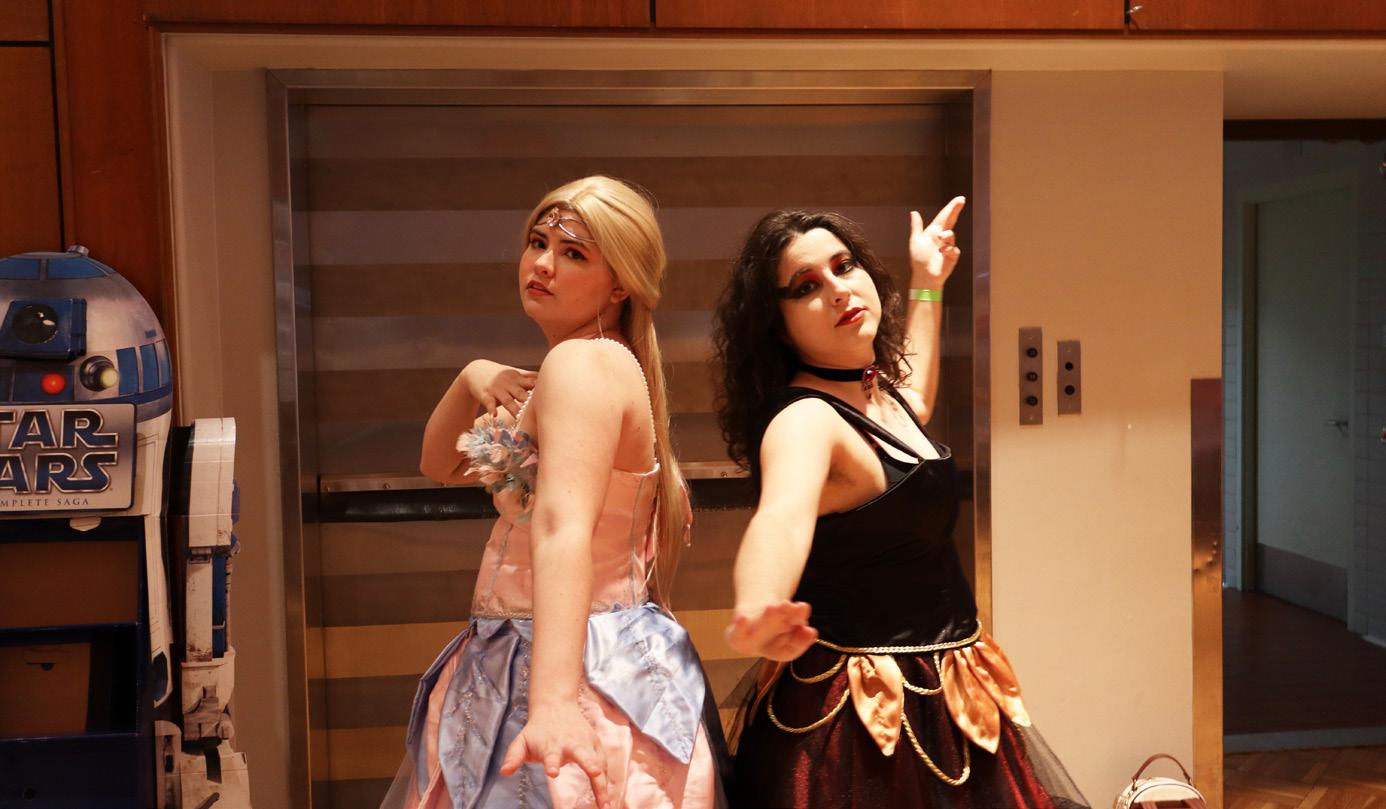
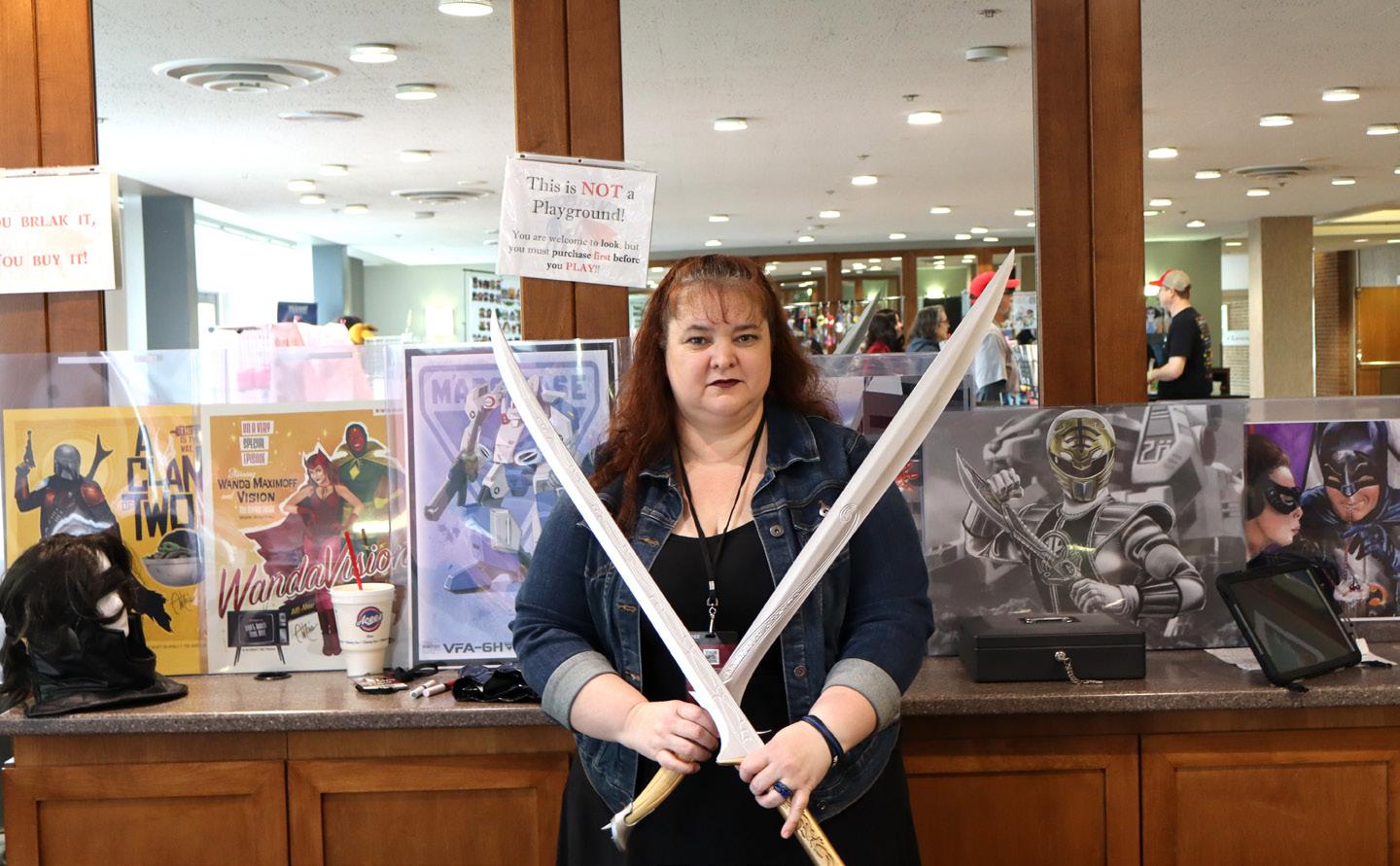
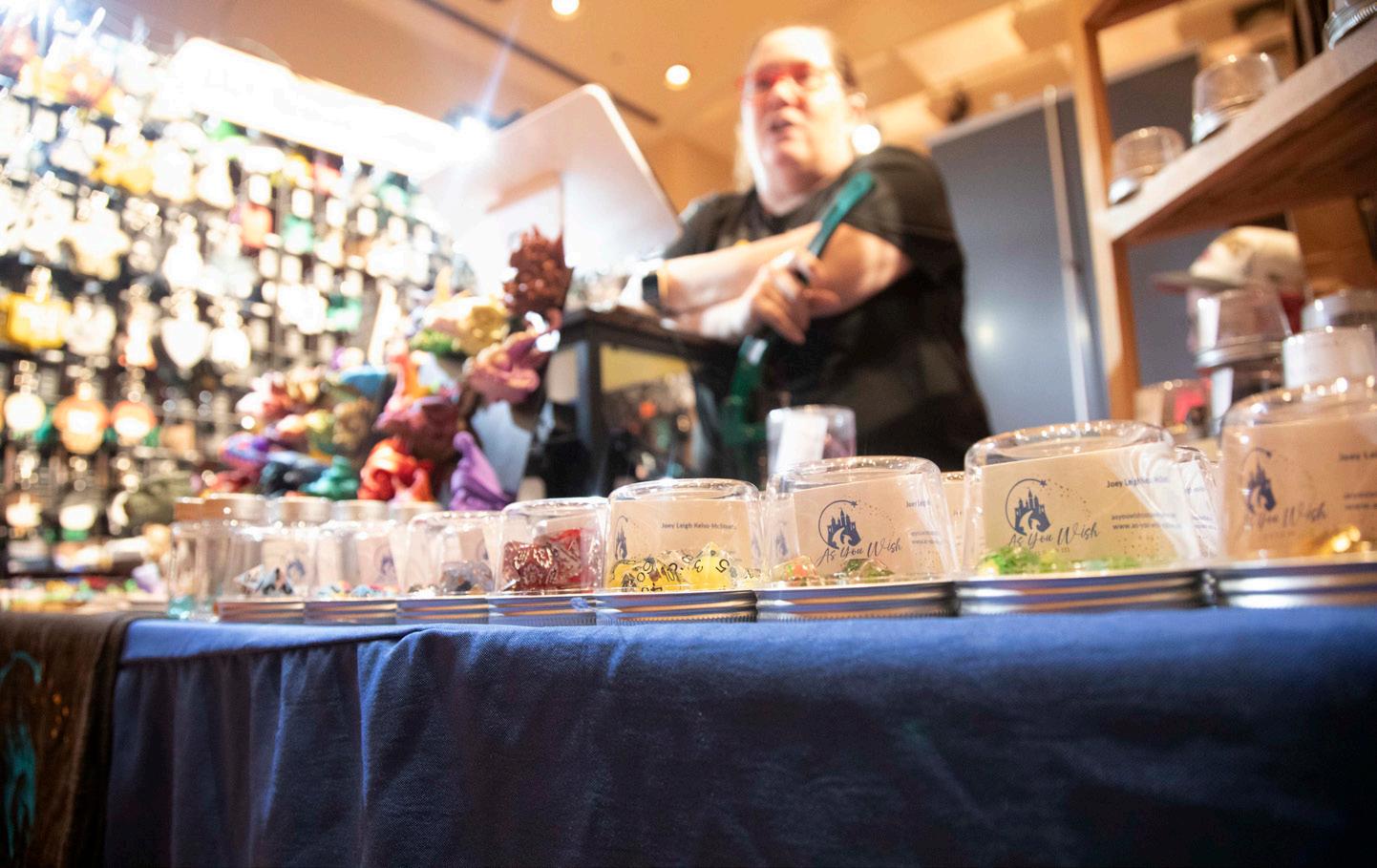

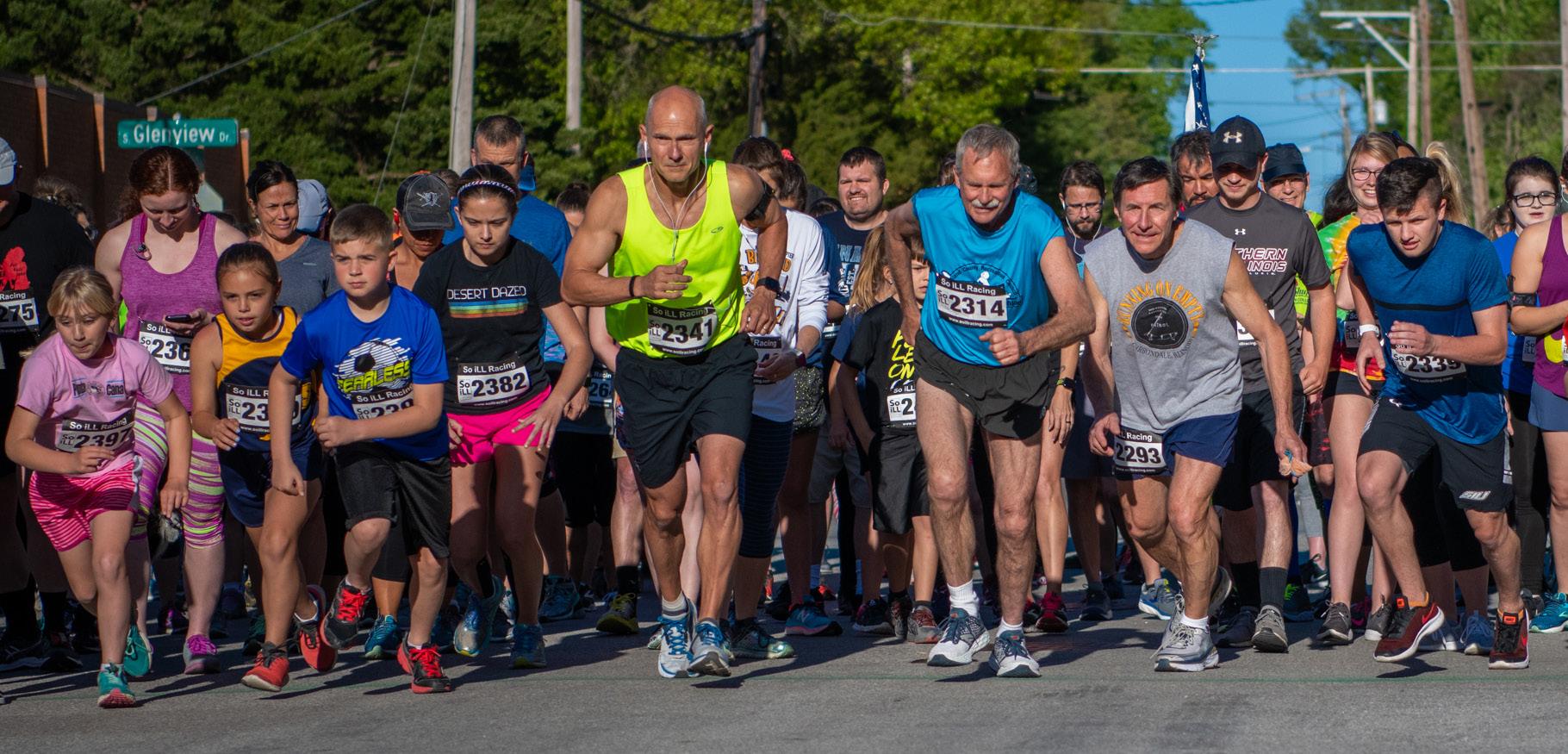
• Day-of registration opens at 4pm
• Race starts promptly at 6pm
• Professionally timed, certified course
• Snacks & refreshments for participants
• Live local music from RognboB & Ruth
• Door prizes
• Kids activities
• Community coloring banner
• Fun for the whole family!

100% of proceeds raised will be donated to Good Samaritan House of Carbondale, a local homeless shelter in our community.
In addition, we ask participants and the community to bring nonperishable goods to go to the food pantry, as they are able. Every donation helps a great cause in our area!



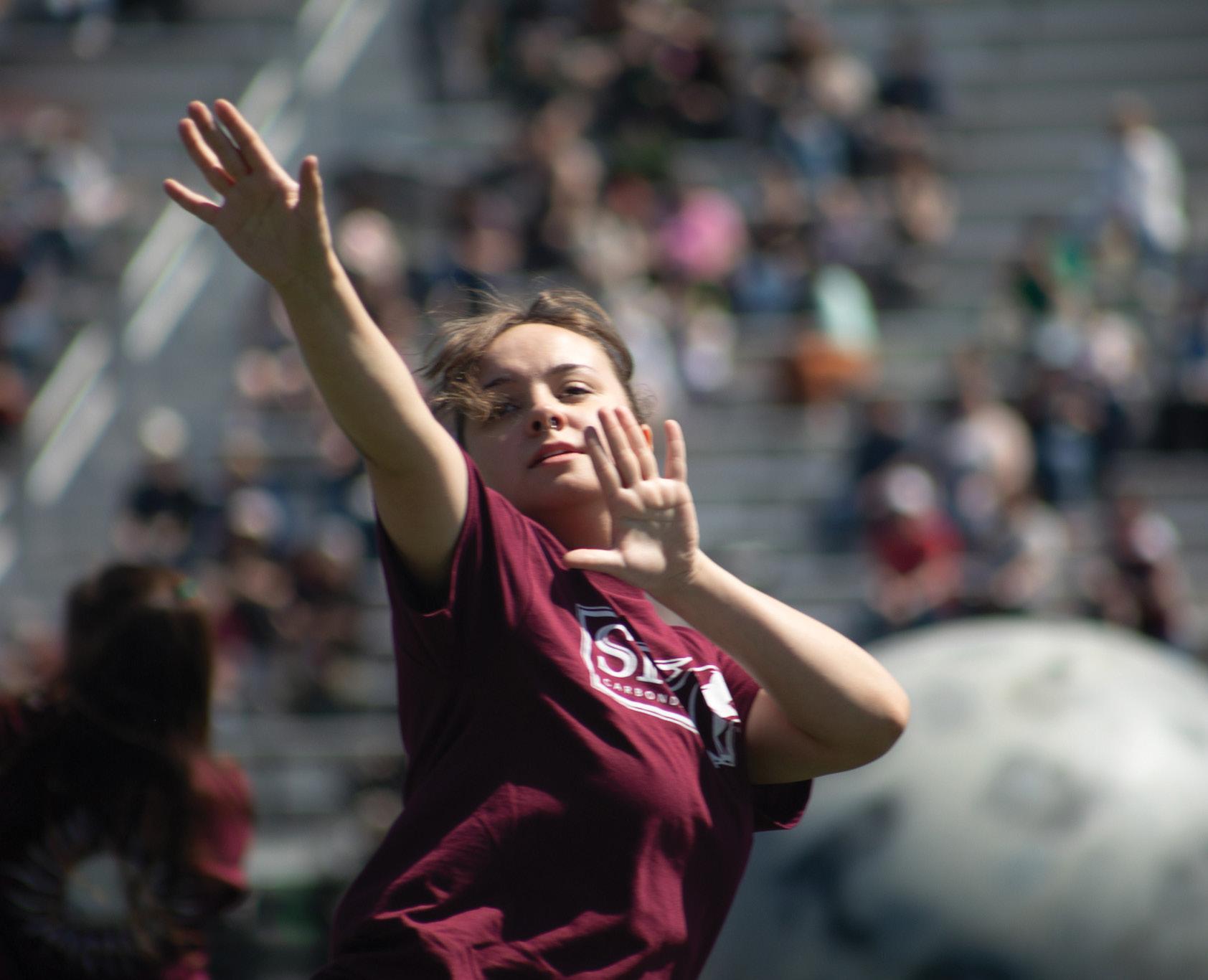
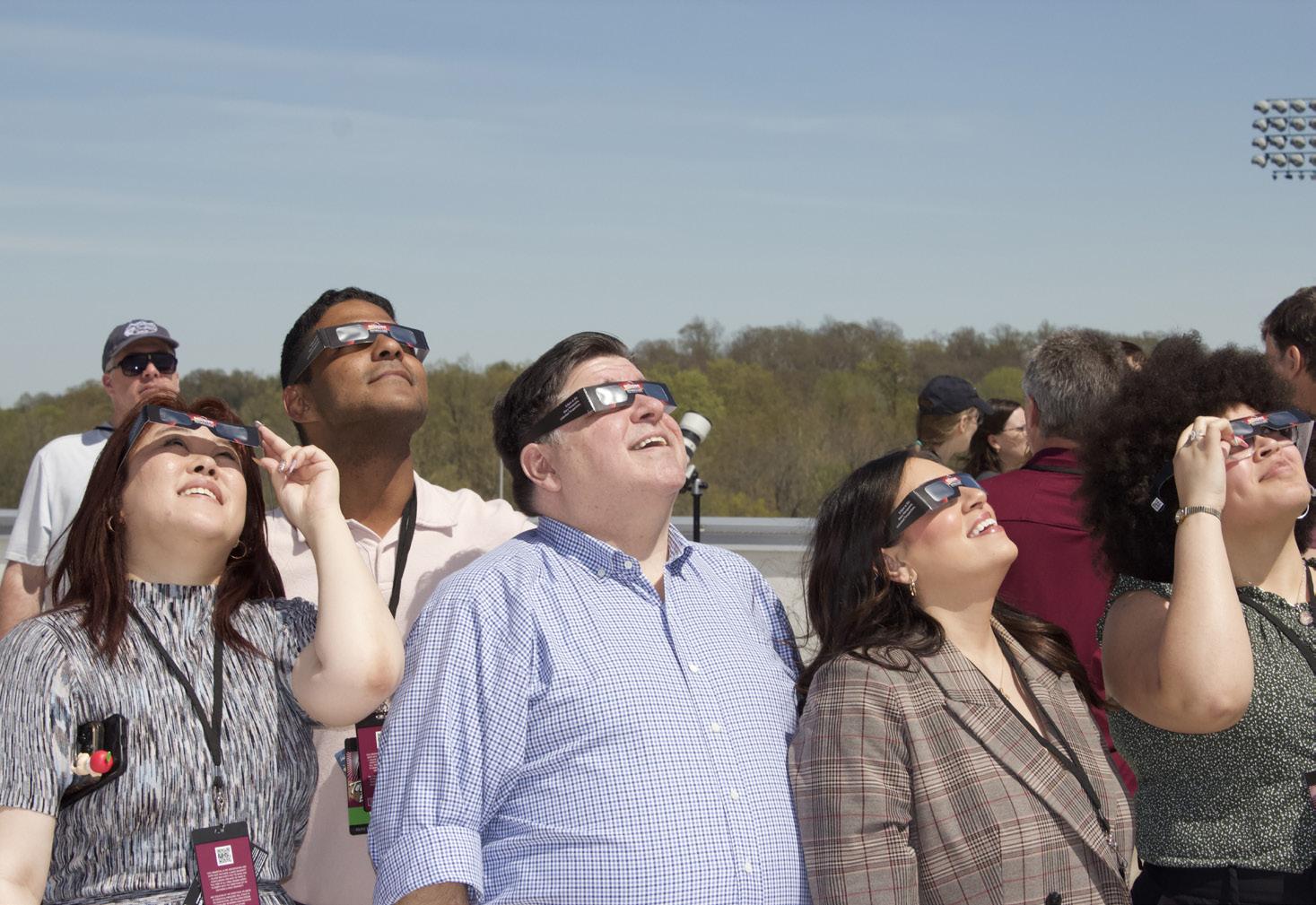
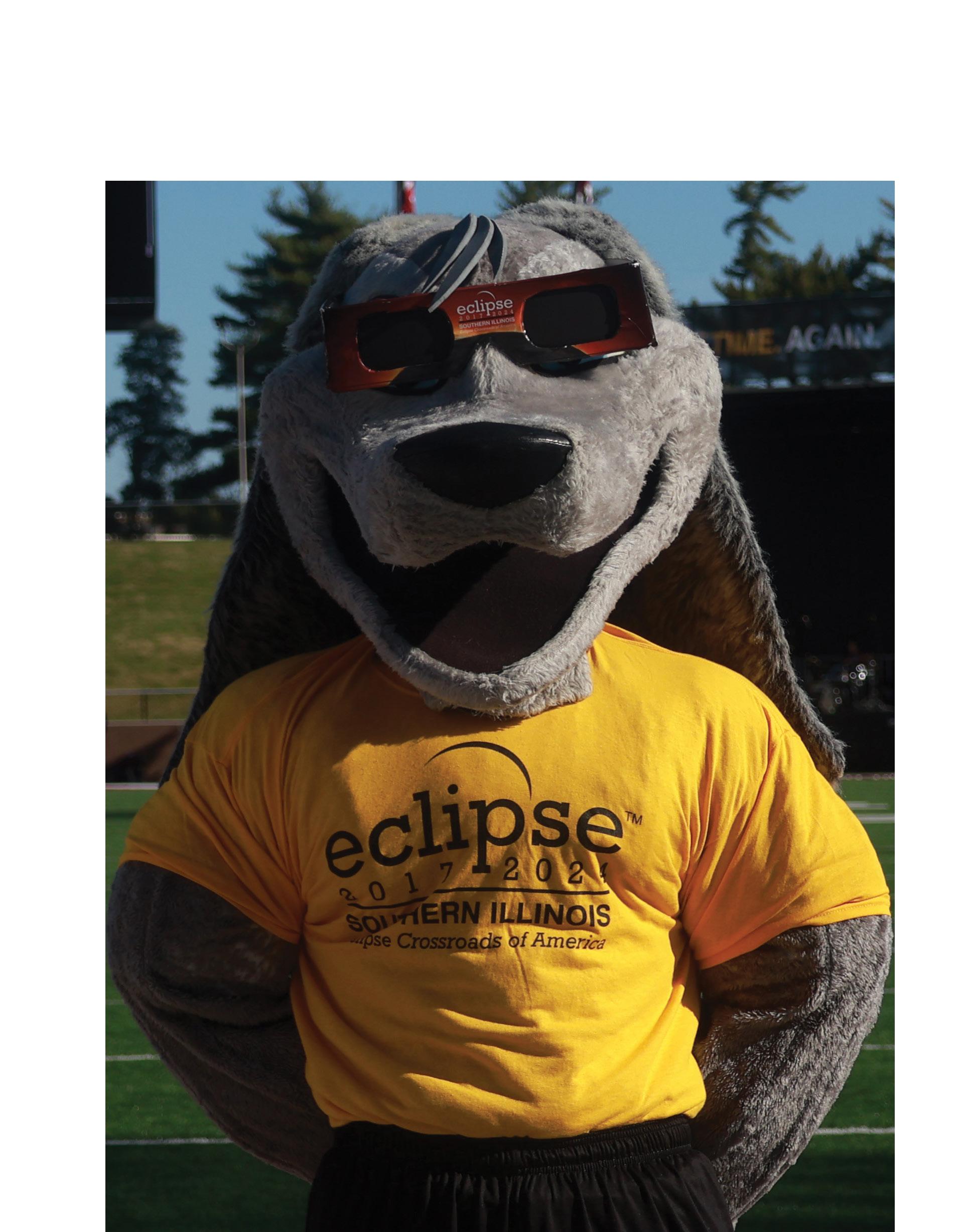

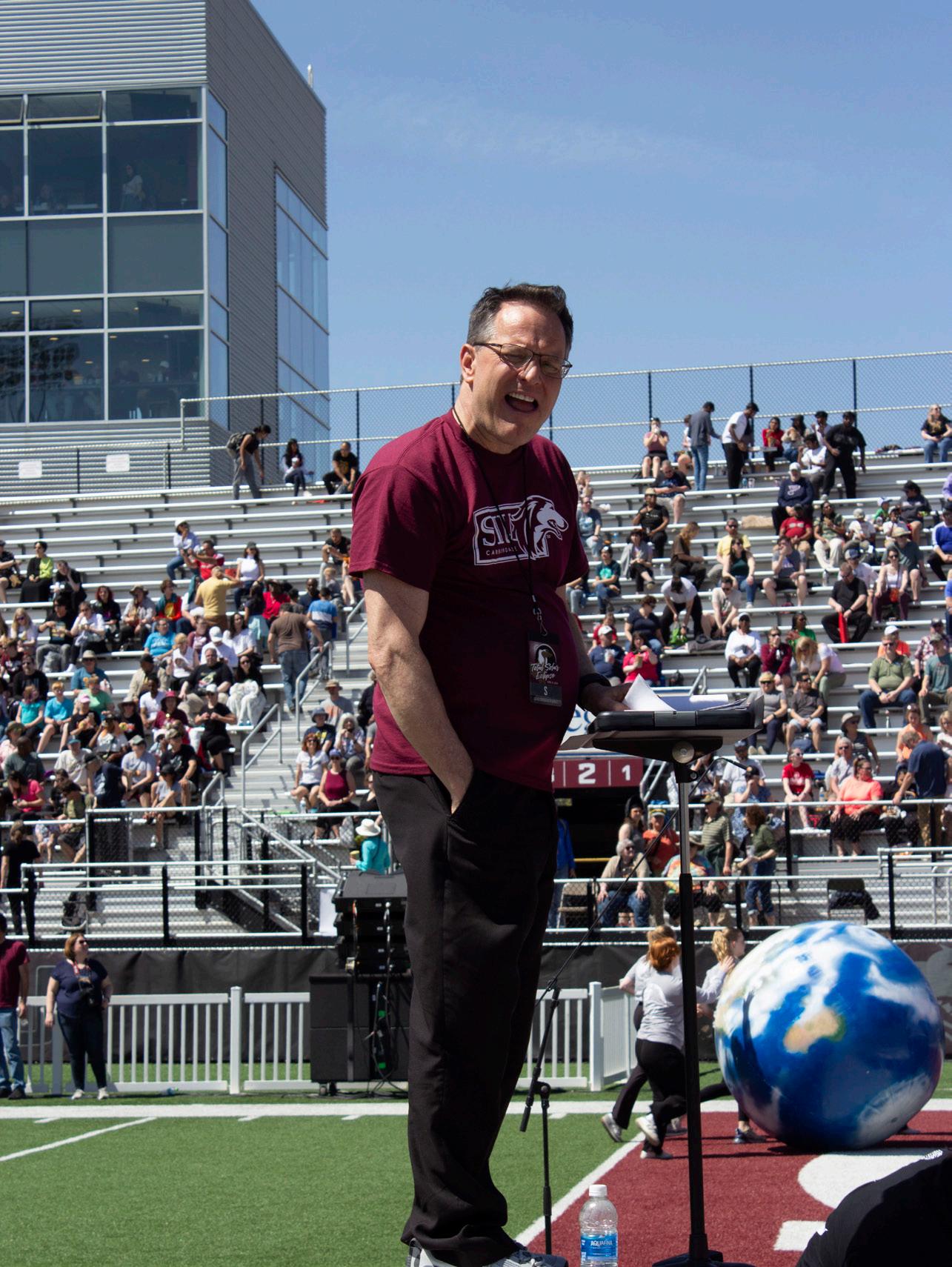
there’s a huge rock bowl around you,” he said.
Drummer Tommy Fell said he hasn’t “played in cooler places.”
The band also consists of violinist/ singer Stephan Cook and guitarist Marty Gomez.
“Our number one goal when we’re playing is just to foster a sense of having fun,” Gill said. “We don’t take ourselves too seriously.”
He also said that intimate shows like this can create a sense of community.
“That’s the biggest reason we keep doing this…” he said. “We’ve been a band for almost 15 years now, and we still host jam nights, because [of] that fostering of community, like, so many bands [and relationships] have met through it. So that’s why we do events like this where it brings together people that…don’t want to go spend a crazy amount of money at a festival [for one act]...At these smaller festivals, you really still feel that energy and appreciation.”
The festival was not just a showcase of music, however.
Wade said, “We have a lot of food and craft vendors out in the back. We do have camping on site. Folks can come down here for a weekend [and] kind of escape everyday life.”
The venue area featured many local businesses, showcasing art, clothes, jewelry, food and much more for sale. Emery Rose, owner of The Awkward Octopus, paired up with her friend’s business Maverick Marvels to offer a variety of clothes and accessories.
“We are a one-stop shop of having a bunch of this that, knick knack, patty wack, we can even give your
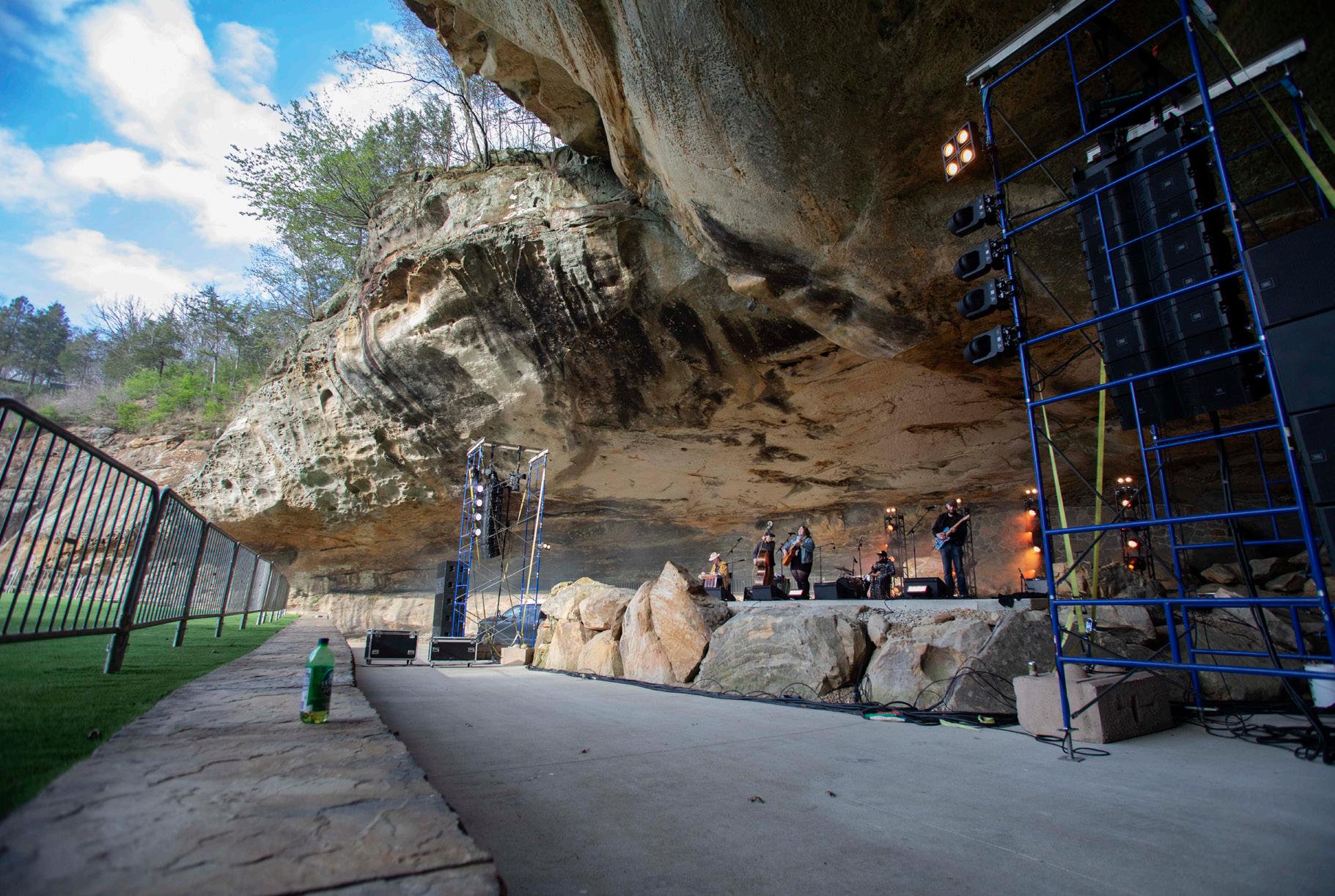
dog a bone,” she said. “So like we have crystals, we have art, handmade art… painting, pens…just different little knickknacks.”
Rose said it was her first time at the venue and she was “really excited just to show up.” However, she mentioned that due to the weather and conflicting activities, the attendance wasn’t what she was hoping for.
“Just because of how cold it is and just because there’s so much other stuff going on, I feel like the turnout wasn’t the best,” she said. “Like as a vendor, that’s what we want is a good turnout to [hopefully go back] to feed our children. But I really liked the venue itself. Like the music
sounds great, the lights are awesome, I mean, the whole setup is great.”
Wade said the turnout on Saturday was “right where [they] expected.”
“Early in the weekend’s always slow. Every day, it’ll pick up more and more,” he said.
Another vendor present was Cheesed Out from central Illinois. The business had both a booth and food truck.
“We started probably about eight years ago in a tent setup and was just doing it to go to festivals and stuff, so it just took off from that first fest and then it turned into having two booths now,” Owner Nick Solomon said.
He said events like these help small


Ohio, Pennsylvania, Colorado, New York, Washington, everybody comes together here. This is their community; this is their escape…And that’s one of the best things…really more important than music, is the feeling of community that you get.”
Rose said opportunities like these have allowed her to build new relationships.
“I’ve built so many friendships. I built great friendships with the people I work with through just working with them,” she said. “I met a bunch of new random people just because of being here at the same place at the same time. And that’s literally what life’s about is being in the moment of where you’re at.”
The festival concluded on Monday night with a relaxation flow session.
“By Monday, everybody has been here for several days, and you know, just kind of wanting to unwind,” Wade said. “So we’re gonna turn the lights on, turn some music on, and just let everybody stretch out and enjoy the beautiful views of the sky and relax.”
businesses grow because it “gets their name out there.”
“[At] every little event, there’s always new people, so you get new faces every time,” he said.
Wade said, “These music festivals create a feeling of community. A lot of our guests, they may only see each other at our events. [They’re from]
The main goal of the amphitheater’s staff, Wade said, was “to have a smooth event.”
“We want all of our customers, our fans, leaving happy,” he said. “Fan experience is the most important thing to us.”
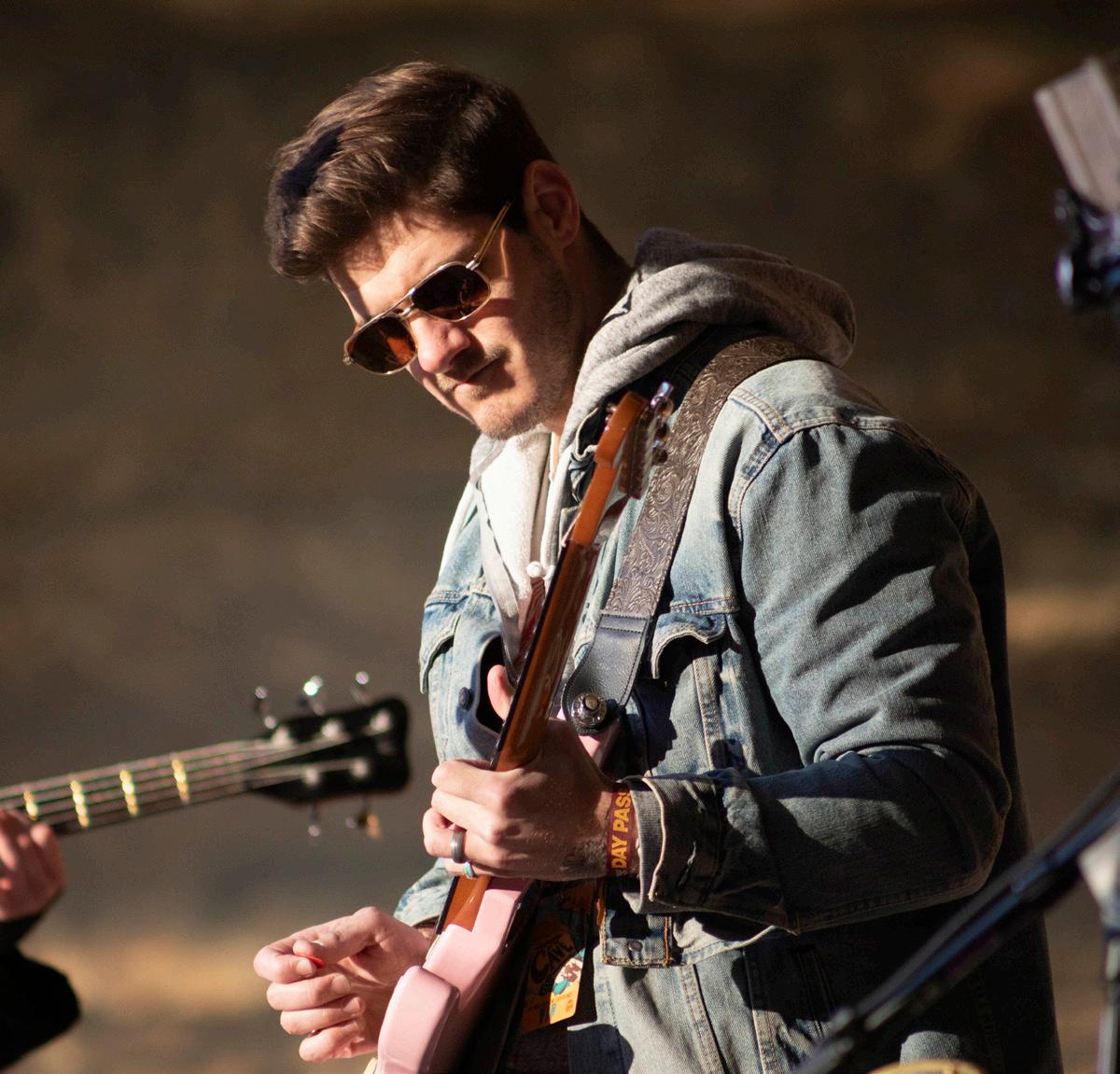

Danley said.
The Dynamic Eclipse Broadcast (DEB) is a nationwide initiative conducted by SIU faculty and students broadcasting and collecting information on the eclipse in the sun. Carbondale was the hotspot for this eclipse being on the path of totality and getting one of the best views in the country.
SIU’s team consists of faculty overseers Bob Baer and Corinne Brevik and a student team led by Richard Danely and members Nate Smith, Marcus Wanless and Ashish Mahanta.
“We usually have to travel to see them,” Danely said. “We’ve been fortunate to have two eclipses within seven years here in the United States. There won’t be one for another several decades that will pass through a majority of the country.”
According to the Nasa Earth Observatory, the last total eclipse recorded was Dec. 4, 2021 over Antarctica lasting two minutes darkening the Antarctica’s summer sky during a time it usually gets a lot of sunlight.
The latest eclipse started on the coast of Mexico going through the eastern United States ending in Canada. Thirty-one million people live on the path of totality that could see it, unlike 2017 where only 12 million people lived on the path of totality.
The DEB initiative had between 80 to 100 teams across the country doing their best to image the Eclipse,”
“Because the total solar eclipse lasts from start to end, about an hour and a half as you broadcast it [you actually were able] to see the corona of the Sun, something that you’re not able to see normally change as time goes on.”
The corona is the outer atmosphere of the sun that humans can’t see with a blind eye because the rest of the sun is so bright said Daniley. What we usually are seeing is the surface of the sun.
“You have so many eyes here on Earth that are able to look at the sky, so many instruments that you don’t have to put into space,” Danely said. “Whereas with space telescopes, there’s only so many you can put in… They have to block out a larger area of the sun to make sure, like, little shifts don’t burn out their sensors, so they really only see the outer part of that Corona and we don’t see the inner part, like we do during an eclipse.”
Danley and his team traveled to Vincennes, Indiana, the day of the eclipse to collect images while others were at the school with Baer, collecting their own data and information.
They all set up the telescopes, making sure they were aligned on the path of totality to track the sun evenly broadcasting before the eclipse started.
Brevik said researchers don’t have much data on the lower atmosphere of the sun, making eclipses prime time to study how the sun actually operates.
“So we know that we have
eruptions, we know there’s ejections from the sun, but to be able to understand when they’re occurring, why they’re occurring, how they’re occurring, like, are they speeding up? Are they slowing down? All of that’s important,” Brevik said.
The bigger picture of the research is to learn more about how the sun impacts lives on Earth Brevik said. When the sun has eruptions and the outflow hits the earth, it can disrupt communications.
“They can literally affect like how your radio functions on the ground. They can mess with satellites, they’ll fry the electronics if they’re big enough,” Brevik said. We’ve actually had cases where entire satellites where the electronics were messed up and so, even though the satellite’s still there, it doesn’t matter. It’s no good.”
Brevik said major sun eruptions happen regularly and as the world becomes more electronically dependent it’s important to learn how to protect against it. There were other telescope teams outside of the path getting pictures of the sun’s surface during the eclipse. That’s important during any eclipse.
“If we see something cool, we can look at their images and backtrack and see where it came from because we’ll be getting both the atmosphere and the surface images at the same time,” Brevik said.”
Jamilah Lewis can be reached at jlewis@dailyegyptian.com.



Photos by Enan Chediak @EnanChediakPhotography
